Our Verdict
In-body image stabilization (IBIS) is a technology that stabilizes a camera’s sensor to counteract movement, resulting in sharper images and smoother videos, especially in low-light conditions or when using slower shutter speeds. Unlike lens-based stabilization, IBIS works with any attached lens, providing versatility across various photography styles. Modern cameras often feature 5-axis stabilization, compensating for movements like yaw, pitch, roll, and horizontal and vertical shifts. This advancement allows photographers to capture handheld shots with greater confidence, reducing the reliance on tripods or external stabilizing equipment.
In-body Image Stabilization (IBIS) offers photographers the ability to capture sharp, blur-free images, enhancing overall image quality without relying on lens-based stabilization. This guide highlights the top cameras equipped with IBIS, ideal for various photography needs. Among the standout models are the Canon EOS R5 II and Canon EOS R1, both known for their exceptional stabilization features. Whether you’re a professional or an enthusiast, understanding IBIS and selecting the right camera can greatly improve your photographic results. Let’s explore the best IBIS-equipped cameras available today.
In 2003, the Minolta DiMAGE A1 was released which introduced Anti-Shake technology that physically shifted its CCD sensor along the X and Y axes to provide image stabilization.
So what exactly is in-body image stabilization technology and what does it do? Read on to find out which cameras have IBIS.
What is IBIS?
IBIS is an acronym for in-body image stabilization. It’s a relatively new technology within cameras that aims to stabilise your sensor to provide both stable, shake-free video footage and sharp still images when shooting handheld at longer shutter speeds.
IBIS, also known as sensor shift technology, works by physically moving the sensor inside your camera to compensate for camera movement. Built-in gyroscopes and accelerometers are able to calculate the motion and rotation of your camera and move the sensor accordingly to keep the image stable.
What is 5-axis image stabilisation?
Many cameras with IBIS have what is called 5-axis image stabilization. This means that your camera has built-in gyroscopes that provide stabilization along five axes: yaw, pitch, roll, horizontal and vertical.
Yaw is when your camera twists left or right on a vertical axis. Rotation on the front-to-back maxi is called roll. Rotation from side to side is called pitch.
Current cameras that feature IBIS
In this guide we’ve listed out all of the current cameras on the market that feature in-body image stabilisation. Some manufacturers, such as Sony and Olympus, have featured this technology in previous generations of popular models such as the A7 series cameras. Given the unpredictability in finding some of these older cameras, we’ve listed out which cameras have IBIS that we know are readily available.
For a deeper dive into the many different camera types and features available, check out our range of camera buying guides.
Canon EOS R50 V
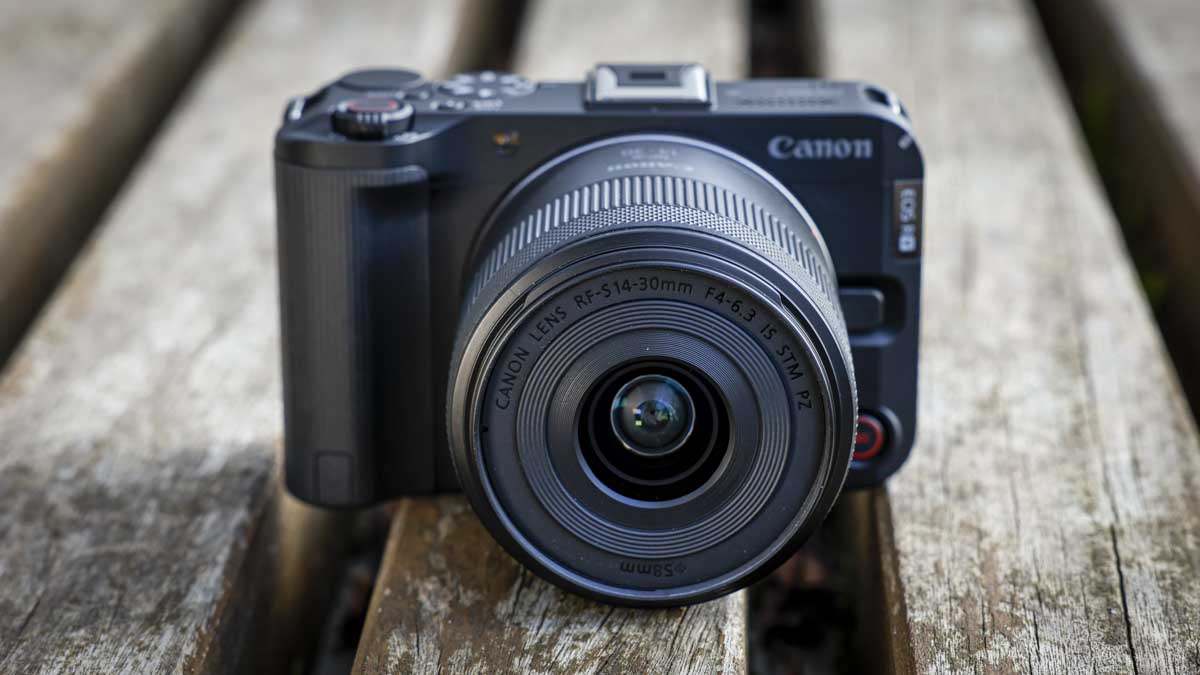
Specification
- Lens mount: Canon RF (interchangeable lenses)
- Sensor: 24MP APS-C CMOS
- Video resolution: 4K 60p, 4K 30p with 6K oversampling, Full HD 120p
- Autofocus: Dual Pixel CMOS AF II
- Log profile: Canon Log 3
- Audio: Four-channel recording support
- Screen: Vari-angle touchscreen
- Connectivity: Wi-Fi, Bluetooth, USB
- Features: Vertical mount support, LIVE button, livestream integration, aspect markers
£839
$949For
- Compact form factor
- Features C-Log3
- Native vertical mounting and shooting
Fujifilm X-M5
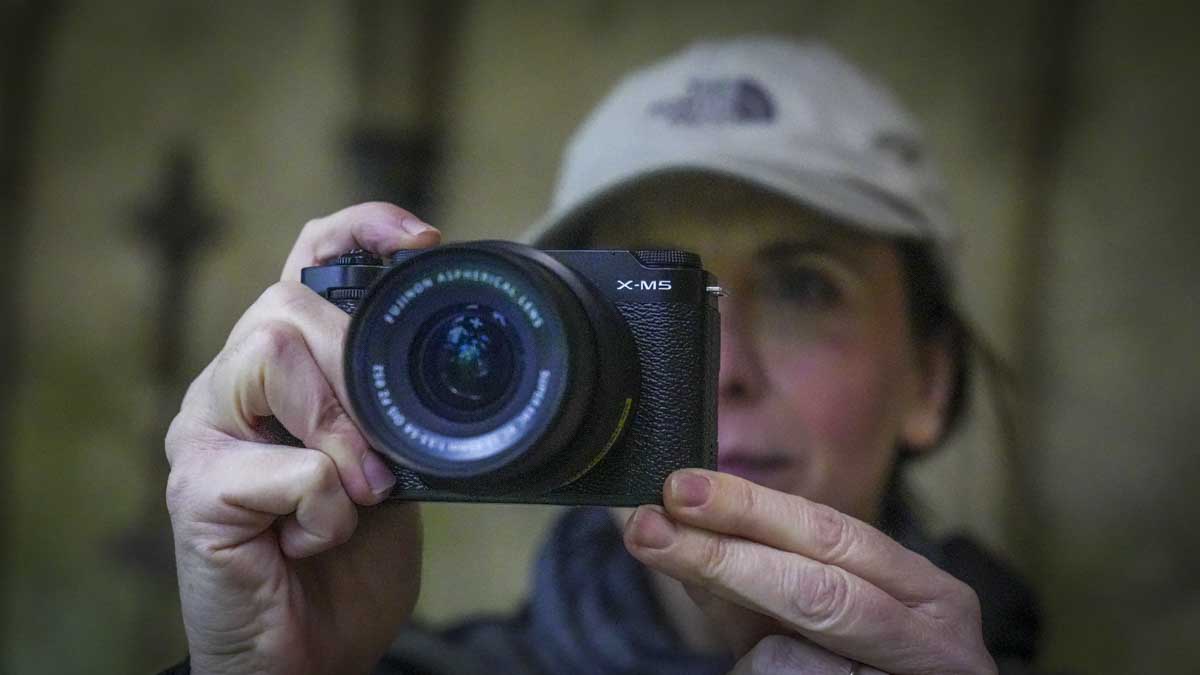
Specification
- Sensor: 26.1MP APS-C X-Trans CMOS 4 sensor
- Processor: X-Processor 5
- ISO Range: 160–12,800 (expandable to 80–51,200)
- Autofocus System: Intelligent hybrid autofocus (contrast and phase detection), Subject detection modes for animals, vehicles, and more
- Continuous Shooting: Up to 15 fps with mechanical shutter, 20 fps with electronic shutter
- Video Recording: 6.2K at 30p, 4K at 60p, Full HD at 240p for slow-motion capture
- Film Simulation Modes: 20 presets including Classic Chrome, Provia, Velvia
- Image Stabilisation: 5-axis in-body image stabilisation (IBIS) up to 7 stops
- EVF: 2.36-million-dot OLED electronic viewfinder
- LCD Screen: 3.0-inch 1.84-million-dot fully articulated touchscreen
- Weight: Approximately 355g (including battery and memory card)
- Dimensions: 123.5mm x 85.2mm x 44.5mm
£899
$899For
- Compact
- Packed with features
- Quick-access film modes
Fujifilm X100VI
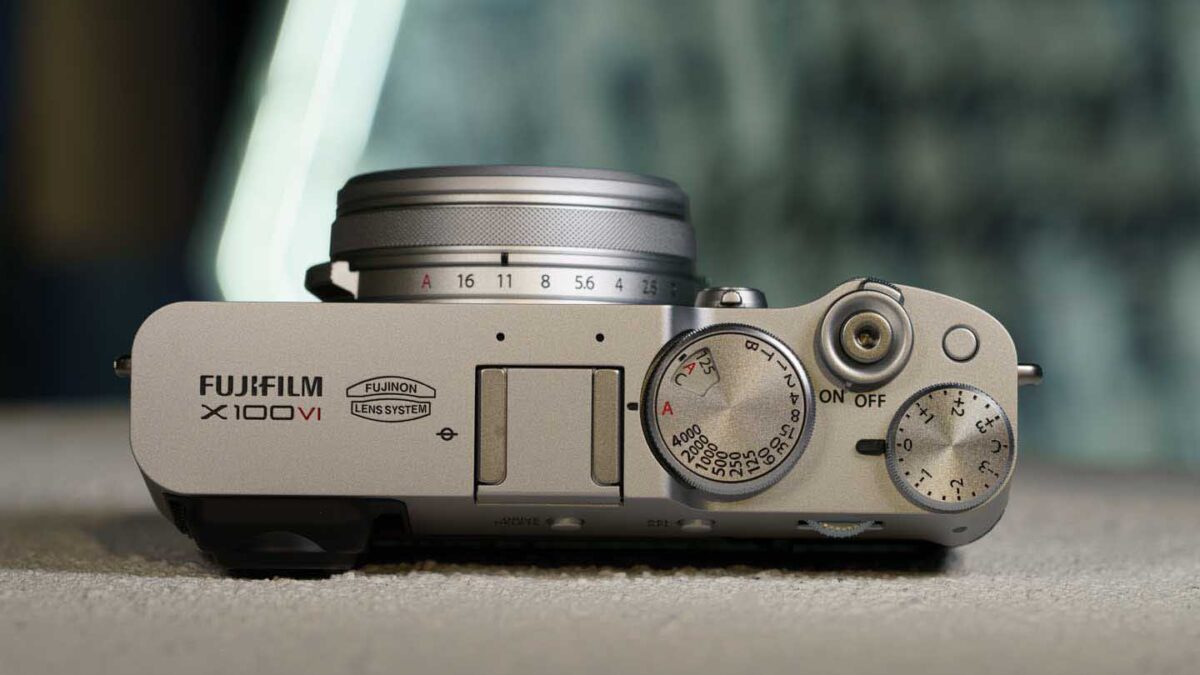
Specification
- Camera type: Compact
- Announced: 20th February 2024
- Sensor: APS-C format 40.2Mp X-Trans CMOS 5 HR sensor
- Processing engine: X-Processor 5
- Lens: Fujinon 23mm f/2 (35mm equivalent)
- Sensitivity range: ISO 160-12,800
- Viewfinder: Optical: Reverse Galilean viewfinder with electronic bright frame display, 95% coverage and x0.52 magnification, Electronic: 0.5 inch 3,690,000-dot OLED with 100% coverage, 0.66x magnification
- Screen: Tilting 3.0-inch 1,620.000-dot touchscreen LCD
- Autofocus system: Intelligent hybrid with up to 425 selectable AF points and Subject Detection
- Continuous shooting: Mechanical shutter: 11fps, Electronic shutter: 20fps
- Max video resolution: 6.2K up to 30p with 1.23x crop, 4K up to 60p
- Storage: Single SD/SDHC/SDXC UHS-I
- Dimensions (WxHxD): 128.0 x 74.8 x 53.3mm / 5.04 × 2.94 × 2.10inch (minimum depth 32.7mm/1.29inch)
- Weight: 521g including battery and SD memory card
The Fujifilm X100VI, launched in 2024, marks a milestone for the X100 series with its integration of 6-stop In-Body Image Stabilization (IBIS). This feature enhances handheld shooting by minimizing camera shake, enabling sharper images and smoother videos. Compact and powerful, it’s a standout choice for street and travel photographers.
£1599
$1599 / €1799For
- Excellent AF system with subject detection
- Hybrid viewfinder built-in
- Fast high-quality lens
Which Canon cameras have IBIS?
When Canon announced the EOS R5 and EOS R6 in July 2020, they were the first Canon cameras to offer in-body image stabilisation. As Canon’s EOS R system grows, it seems likely we will see more cameras with IBIS.
Canon EOS R5
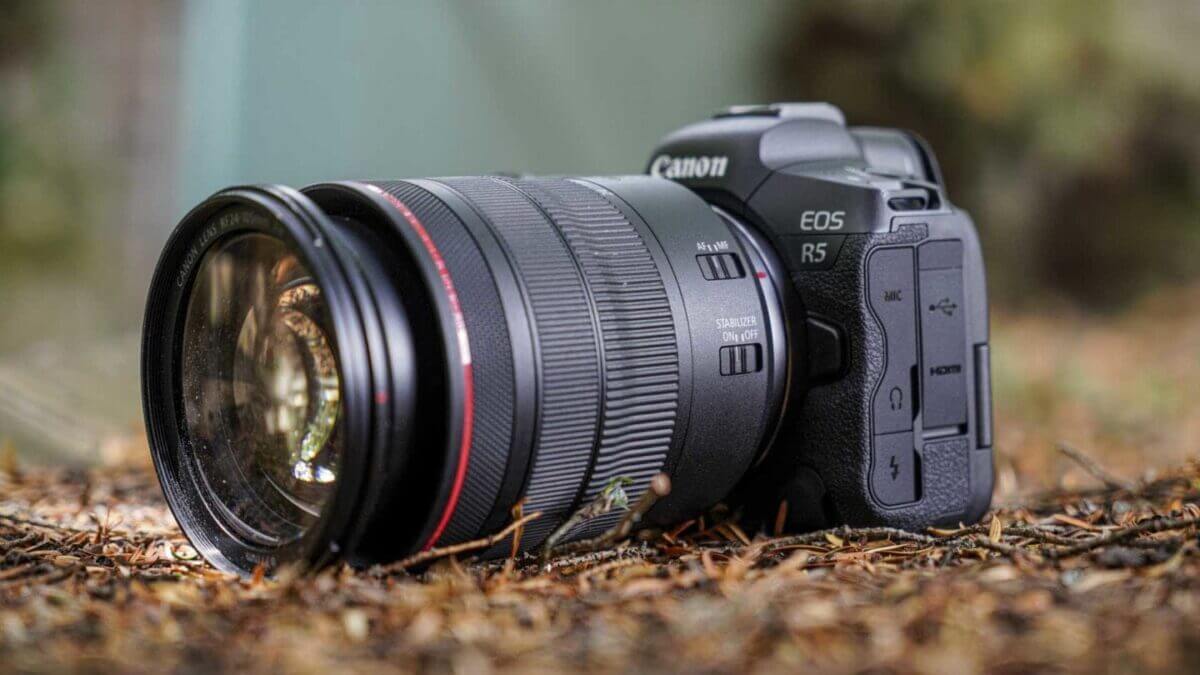
Specification
- Camera Type: Mirrorless
- Announced: 9th July 2020
- Sensor: 45Mp Full-frame Dual Pixel CMOS AF II
- Processor: Digic X
- Lens mount: RF
- Sensitivity range: Stills: ISO 100-51,200 expandable to ISO 50-102,400, Movies: ISO 100-25600, expandable to ISO ISO 51,200
- Metering: 384-zone metering with Evaluative metering (linked to All AF points), Partial metering (approx. 6.1% of viewfinder at centre), Spot metering: Centre spot metering (approx. 3.1% viewfinder at centre), Centre weighted average metering
- Shutter speed range: 1/8000sec-30 seconds and Bulb
- File formats: Raw + Jpeg/HEIF, MP4
- Maximum continuous shooting rate: Mechanical shutter: 12fps, Electronic shutter: 20fps
- Maximum video resolution: Uncropped, internal raw recording 8K video at up to 29.97fps in 4:2:2 10-bit in Canon Log (H.265) or 4:2:2 10-bit HDR PQ (H.265), Uncropped internal recording 4K video at up to 119.88fps in 4:2:2 10-bit in Canon Log (H.265) or 4:2:2 10-bit HDR PQ (H.265) 4:2:2 10-bit in Canon Log or 4:2:2 10-bit HDR PQ, 4K output over HDMI at up to 59.94fps
- Autofocus system: Dual Pixel CMOS AF II phase detection with 5940 points in stills and 4500 points in movie mode
- Viewfinder: 0.5-inch 5.76million-dot OLED electronic viewfinder with 120fps display and 0.76x magnification
- Screen: 3.15-inch 2.1-million dot vari-angle touchscreen
- Autofocus: Dual Pixel CMOS AF II with Advanced Animal AF (recognising dogs, cats and birds) supported in all video modes with 100% coverage and up to 1053 'AF segments'
- Stabilisation: In-body image stabilisation (IBIS) that works with lens IS and enables up to 8-stops of shutter speed compensation
- Storage: Dual slots, 1x CFexpress, 1x SDXC UHS-II
- Dimensions: 135.8 x 97.5 x 88mm
- Weight: 650 g / 738 g with card and battery
With the increasing demand for in-body image stabilization (IBIS), Canon finally incorporated this feature into its flagship EOS R system camera, the EOS R5, in 2020. While Canon had relied on lens-based stabilization in the past, the EOS R5 boasts a 5-axis IBIS, surpassing their previous approach.
One remarkable feature of the EOS R5 is its impressive shutter speed compensation of 8Ev, outdoing other cameras in the market. To put it in perspective, it can compensate the difference between 1/500 sec and 1.3sec, making it a game-changer for photographers looking for a reliable and fast camera.
Furthermore, the IBIS works seamlessly with any lens stabilization to produce outstanding results. This is made possible by the RF mount’s 12-pin connection, which improves communication between the lens and camera body, allowing them to work together more efficiently.
£4199
$3899For
- 45Mp full-frame sensor with full AF coverage
- 12fps/20fps continuous shooting with continuous AF
- Uncropped internal 8K video recording for up to 20 minutes
Canon EOS R6 Mark II
Specification
- Camera Type: Mirrorless
- Announced: 2nd November 2022
- Sensor: 24.2MP Full-frame Dual Pixel CMOS AF II
- Processor: Digic X
- Lens mount: RF
- Sensitivity range: Stills: ISO 100-102,400 expandable to ISO 50-204,801, Video: ISO 100-25,600 expandable to ISO 204,801
- File formats: Raw + Jpeg/HEIF, MP4 H.264/H.265
- Continuous shooting rate: Mechanical shutter: 12fps for 1000+ Jpeg or 110 raw or 1000 CRAW images, Electronic shutter: 40fps for 190 Jpeg or 75 raw or 140 CRAW images, or 20fps, 5fps all with AF tracking
- Maximum video resolution: 4K (3840 x 2160) up to 60fps, Full HD (1920 x 1090) at up to 120fps
- Autofocus system: Dual Pixel CMOS AF II phase detection with 100% coverage
- Viewfinder: 0.5-inch 3.69million-dot OLED electronic viewfinder with 120fps refresh rate
- Screen: 3-inch 1.62-million dot vari-angle touchscreen
- Autofocus: Dual Pixel CMOS AF II with Advanced Animal AF (recognising dogs, cats and birds) supported in all video modes with 100% coverage and up to 1053 'AF segments'
- Stabilisation: In-body image stabilisation (IBIS) that works with lens IS and enables up to 8-stops of shutter speed compensation
- Storage: Dual slots, 2x SDXC UHS-II
- Dimensions: 138.4 x 98.4 x 88.4mm
- Weight: 588g / 670 g with card and battery
The Canon EOS R6 Mark II features an advanced built-in image stabilization system rated to provide up to 8.0 stops of shake reduction. This high degree of stabilization is beneficial for both photography and videography, particularly in low-light conditions or when using slower shutter speeds.
The system was very effective in our tests, reducing camera shake and blur across various shooting scenarios, making it versatile for different types of photography and videography.
£2800
€3149.99For
- Popular pixel count
- Fantastic subject detection AF
- 4K video oversampled from 6K
Canon EOS R6

Specification
- Camera Type: Mirrorless
- Announced: 9th July 2020
- Sensor: 20Mp Full-frame Dual Pixel CMOS AF II
- Processor: Digic X
- Lens mount: RF
- Sensitivity range: Stills: ISO 100-102,400 expandable to ISO 50-204,800, Movies: ISO 100-6,400, expandable to ISO 204,800
- File formats: Raw + Jpeg/HEIF, MP4
- Maximum continuous shooting rate: Mechanical shutter: 12fps, Electronic shutter: 20fps
- Maximum video resolution: 4K video at up to 60fps, Full HD at up to 120fps. 4K video crop: 1.07x at 25p (1.19x with the Digital IS on), 1.52x at 60p
- Autofocus system: Dual Pixel CMOS AF II phase detection with 6,072 points in stills and 4968 points in movie mode
- Viewfinder: 0.5-inch 3.69million-dot OLED electronic viewfinder with 120fps refresh rate
- Screen: 3-inch 1.62-million dot vari-angle touchscreen
- Autofocus: Dual Pixel CMOS AF II with Advanced Animal AF (recognising dogs, cats and birds) supported in all video modes with 100% coverage and up to 1053 'AF segments'
- Stabilisation: In-body image stabilisation (IBIS) that works with lens IS and enables up to 8-stops of shutter speed compensation
- Storage: Dual slots, 2x SDXC UHS-II
- Dimensions: 138.4 x 97.5 x 88.4mm
- Weight: 598g / 680 g with card and battery
Like the EOS R5, the Canon EOS R6 also boasts in-body image stabilisation. The R6 is also Canon’s low-light maestro.
While the R5’s AF system is claimed to be sensitive down to -6EV, the R6’s AF system can function at down to -6.5EV. That’s incredibly low light and a new record for a Canon EOS camera.
Shooting in dim conditions can also necessitate slow shutter speeds, but that’s OK because the Canon R6 has 5-axis in-body image stabilisation built-in.
This works in harmony with the stabilisation in Canon’s IS lenses and is claimed to offer up to 8 stops of shutter speed compensation. That’s a new high for the photographic industry.
The autofocus and stabilisation specifications are extremely promising in this camera, and the Canon EOS R6 should prove extremely popular with photographers.
£2500
€2899.99For
- Similar 20Mp full-frame sensor to the Canon EOS 1D X Mark III
- 12fps/20fps continuous shooting
- Superb autofocus system
Canon EOS R3
Specification
- Camera Type: Mirrorless
- Announced: 14th September 2021
- Sensor: 24.1Mp Full-frame BSI stacked CMOS
- Processor: Digic X
- Lens mount: RF
- Sensitivity range: Stills: ISO 100-102,400 expandable to ISO 50-204,800, Video: ISO 100-25,600 expandable to 100-102,400
- Metering: 384-zone metering with Evaluative metering (linked to All AF points), Partial metering (approx. 5.9% of viewfinder at centre), Spot metering: Centre spot metering (approx. 2.9% viewfinder at centre), Centre weighted average metering
- Shutter speed range: Mechanical shutter: 30- 1/8,000 sec and Bulb, Electronic shutter: 30-1/64,000 sec
- Still file formats: Raw + Jpeg/HEIF
- Maximum continuous shooting rate: Mechanical shutter / 1st curtain electronic: 12fps for 1000+ Jpeg or 1000 raw, Electronic shutter: 30fps for 540 Jpegs or 150 raw images
- Main video resolutions: 6K DCI (17:9) 6000 x 3164 (59.94, 50, 29.97, 25, 24, 23.98fps) raw, 4K DCI (17:9) 4096 x 2160 (59.94, 50, 29.97, 25, 24, 23.98fps) intra or inter frame / light inter frame 4K UHD (16:9) 3840 x 2160 (119.9, 100, 59.94, 50, 29.97, 25, 23.98 fps) intra or inter frame Full HD (16:9) 1920 x 1080 (119.9, 100, 59.94, 50, 29.97, 25, 23.98 fps) intra or inter frame Full HD (16:9) 1920 x 1080 HDR (29.97, 25 fps) inter frame
- Video conatiner formats: MP4, raw (CRM)
- Colour sampling: 6K raw 12bit, 4K/ Full HD - 4:2:0 8-bit or 4:2:2 10bit
- Log: Canon Log 3
- Autofocus system: Dual Pixel CMOS AF II phase detection with 1,053 points
- Viewfinder: 0.5-inch 5.76million-dot OLED electronic viewfinder with 120fps display and 0.76x magnification
- Screen: 3.2-inch 4.15-million dot vari-angle touchscreen
- Stabilisation: In-body image stabilisation (IBIS) that works with lens IS and enables up to 8-stops of shutter speed compensation
- Storage: Dual slots, 1x CFexpress, 1x SDXC UHS-II
- Dimensions: 150x 142.6 x 87.2mm
- Weight: 822g body only, 1015g with card and battery
The Canon EOS R3 has a 5-axis system that works in stills and movie mode. It can also work in harmony with stabilised Canon RF lenses to provide a shutter speed compensation of up to 8EV. That’s the difference between 1/250sec and 1sec.
Because the Canon R3’s image stabilisation system works in video mode as well as when shooting stills, it makes handheld footage rock-steady. In our tests, we found that our handheld footage looked like we had mounted the camera on a tripod.
Overall, the Canon EOS R3 is another significant stride forward in the development of mirrorless cameras, offering the type of features and build quality that will appeal to professional sports and news photographers. It’s expensive, but it’s a very powerful camera.
£5880
$5999 / €6689.99For
- 24Mp full-frame sensor with full AF coverage
- 12fps/30fps continuous shooting with continuous AF
- Eye Control AF
Canon EOS R7
Specification
- Camera type: Mirrorless
- Announced: 24th May 2022
- Sensor: 32.5Mp APS-C format (22.3 x 14.8mm) CMOS
- Processor: Digic X
- Lens mount: Canon RF
- Sensitivity range: ISO 100-32,000 expandable to ISO 51,200
- AF system: Dual Pixel CMOS II AF phase detection with up to 5915 positions and 651 automatically selectable points
- Subject detection and tracking: Humans (Eyes/Face/Head/Body), Animals (Dogs, Cats and Birds) or Vehicles (Racing cars or Motor bikes)
- Viewfinder: 0.39-type 2,360,000-dots OLED EVF
- Screen: Touch-sensitive vari-angle 2.95-inch LCD with 1.62 million dots
- Video resolution: 4K (3840 x 2160) at up to 60p, Full HD: (1920 x 1080) at up to 120p
- Max continuous shooting rate: Mechanical shutter: 15fps for up to 224 Jpegs or 51 raw files, Electronic shutter: 30fps for 126 Jpegs or 42 raw files
- Shutter speed range: Mechanical: 30-1/8000 sec, Bulb, Electronic: 30-1/16000 sec
- Built-in flash: No
- Battery: Li-ion LP-E6N, Viewfinder: Approx. 500 shots Screen: Approx 770 shots
- Dimensions (W x H x D): 132.0 x 90.4 x 91.7mm
- Weight: 612g including battery and memory card
Canon’s latest flagship APS-C mirrorless camera, the R7, comes equipped with a range of impressive features, including in-body image stabilisation (IBIS). This marks a continuation of the trend started by the EOS R5 and R6, which were the first Canon cameras to offer IBIS.
The R7’s IBIS system corrects camera shake across 5 axes, providing up to 8EV shutter speed compensation. Additionally, when paired with the new RF-S 18-150mm f3.5-6.3 IS STM kit lens, it offers up to 7EV compensation.
One unique feature of the R7’s IBIS is its ability to correct a sloping horizon through the horizon correction feature, which can be accessed through the menu. This feature utilizes the sensor’s movement to correct the horizon, with the impact visible in the viewfinder and on the camera’s screen.
Given that Canon is marketing the R7 as a hybrid camera, the ability to handhold while filming is a real advantage for vloggers and content creators. With IBIS built in, the R7 enables users to shoot stable and steady videos, further expanding its appeal.
£1350
$1499 / €1649.99For
- Phase detection focusing and intelligent subject detection
- 32.5MP APS-C sensor
- Same mount as Canon R3, R5 and R6
Which Sony cameras have IBIS?
Many of Sony’s expansive Alpha range and A7 series cameras offer impressive stabilisation. The following Sony cameras all boast IBIS which, in our tests, have proven capable of excellent results.
Sony A7 IV
Specification
- Camera type: Full-frame mirrorless
- Announced: 21st October 2021
- Sensor: 33Mp full frame (35.9 x 24.0mm) BSI Exmor R CMOS sensor
- Lens mount: FE
- Sensitivity range: Stills: ISO 100-51,200 (expandable to ISO 50 to ISO 204,800), Video: ISO ISO 100-51,200 (expandable to ISO 100-102,400)
- Still Image format: Jpeg, HEIF, raw (Sony ARW 4.0)
- Video format & compression: XAVC S: MPEG-4 AVC/H.264, XAVC HS: MPEG-H HEVC/H.265
- 4K Video (XAVC HS): 3840 x 2160 (4:2:0, 10bit, NTSC): 60p (150 Mbps / 75 Mbps / 45 Mbps), 24p (100 Mbps / 50 Mbps / 30 Mbps), 3840 x 2160 (4:2:0, 10bit, PAL): 50p (150 Mbps / 75 Mbps / 45 Mbps), 3840 x 2160 (4:2:2, 10bit, NTSC): 60p (200 Mbps / 100 Mbps), 24p (100 Mbps / 50 Mbps), 3840 x 2160 (4:2:2, 10bit, PAL): 50p (200 Mbps / 100 Mbps)
- 4K Video (XAVC S): 3840 x 2160 (4:2:0, 8bit, NTSC): 60p (150 Mbps), 30p (100 Mbps / 60 Mbps), 24p (100 Mbps / 60 Mbps), 3840 x 2160 (4:2:0, 8bit, PAL): 50p (150 Mbps)5, 25p (100 Mbps / 60 Mbps), 3840 x 2160 (4:2:2, 10bit, NTSC): 60p (200 Mbps)56, 30p (140 Mbps), 24p (100 Mbps), 3840 x 2160 (4:2:2, 10bit, PAL): 50p (200 Mbps)5, 25p (140 Mbps)
- 4K Video (XAVC S-I): 3840 x 2160 (4:2:2, 10bit, NTSC): 60p (600 Mbps)56, 30p (300 Mbps)6, 24p (240 Mbps), 3840 x 2160 (4:2:2, 10bit, PAL): 50p (500 Mbps)5, 25p (250 Mbps)
- Movie functions: Audio Level Display, Audio Rec Level, PAL/NTSC Selector, Proxy Recording (1280 x 720 (Approx. 6 Mbps), 1920 x 1080 (Approx. 9 Mbps), 1920 x 1080 (Approx. 16 Mbps)), TC/UB, Auto Slow Shutter, Gamma Disp. Assist
- Autofocus system: Hybrid AF with 759 phase detection points and 425 contrast detection points, Still images: Human (Right/Left Eye Select) / Animal (Right/Left Eye Select) / Bird, Movie: Human (Right/Left Eye Select), sensitive down to -4EV
- Maximum continuous shooting rate: 10fps
- Viewfinder: 0.5-inch 3,686,400-dot EVF with 100% coverage and up to 0.78x magnification
- Screen: 3-inch 1,036,800-dot vari-angletouchscreen
- Image stabilisation: 5-axis giving up to 5.5EV compensation
- Storage: Dual: 1: SD/SDHC/SDXC (UHS-I/II) & CFexpress Type A slot, 2: SD/SDHC/SDXC (UHS-I/II)
- Battery: NP-FZ100 rechargeable Li-ion battery giving 610 images with the screen
- Dimensions (WxHxD): 131.3 x 96.4 x 79.8mm / 5 1/4 x 3 7/8 x 3 1/4 inches
- Weight (including battery & memory card): 658g / 1 lb 7.3 oz
The Sony A7 IV represents a significant upgrade over the A7 III, making it a worthy successor in the Sony A7 camera series.
One of the key improvements Sony has made is in the area of shutter speed compensation, with the A7 IV boasting a 5.5 EV factor, a half-stop increase over the A7 III. In our tests, when using the Sony FE 24-70mm f/2.8GM lens at the 70mm end, we achieved around 20% sharp images at 100% on a computer screen when using a 1-second shutter speed, equivalent to a compensation factor of around 6EV.
By dropping the shutter speed to 1/2-second, our hit rate increased to about 40%, while at 1/4-sec, it was around 60-70%. These results demonstrate the impressive capabilities of the A7 IV’s shutter speed compensation system.
In addition to its improved compensation, the A7 IV also features an ‘Active Mode’ that is specifically designed for shooting video, and slightly crops the image. This feature enhances the camera’s versatility, making it ideal for capturing both stills and video footage.
£2400
$2498For
- Good combination of speed and resolution
- Vari-angle touchscreen
- Excellent AF system
Sony A7 III
Specification
- Announced: 26th February 2018
- Camera type: Full-frame mirrorless
- Sensor: 24.2Mp Full frame (35.6×23.8mm), Exmor R CMOS sensor
- Processor: Bionz X
- Lens mount: Sony E
- Sensitivity range: Stills: ISO 100-51,200, expandable to 50-204,800, Video: ISO 100-51,200, expandable to 100-102,400
- Maximum continuous shooting rate: 10fps with full AF and metering
- Maximum video resolution: 4K (3840 x 2160)
- Autofocus system: Hybrid with 693 phase detection points and 425 contrast detection points
- Viewfinder: 0.5-inch OLED with 2,359,296 dots
- Screen: 3-inch 921,600-dot tilting touchscreen
- Storage: Dual Slot, Slot 1: SD (UHS-I/II), Slot 2: Multi slot for Memory Stick Duo/SD (UHS-I)
- Dimensions (W x H x D): 126.9 x 95.6 x 73.7mm
- Weight: 650g
The Sony A7 III is a versatile and impressive camera that offers a range of features that will appeal to photographers and videographers alike. One of its standout features is Sony’s 5-axis optical in-body image stabilisation system, which provides a 5EV extension to your hand-held shutter speed.
During our tests, we were extremely impressed with the A7 III’s stabilisation capabilities, which allowed us to capture handheld shots that would have otherwise been affected by camera shake.
In addition to its stabilisation, the A7 III also boasts impressive shooting speeds and autofocus capabilities, as well as 4K video recording capabilities. Its ability to produce high-quality results and its wide range of compatible lenses only add to its appeal. Overall, the Sony A7 III is an excellent all-rounder that will meet the needs of a broad range of users.
£1699
$1999For
- Good-quality 24Mp full-frame sensor
- Excellent autofocus system
- Attractively priced in the full-frame market
Sony A7R V
Specification
- Camera type: Full-frame mirrorless
- Announced: 26th October 2022
- Sensor: 61MP full-frame sensor
- Processing engine: Bionz XR
- Lens mount: Sony FE
- Continuous Shooting: Up to 10fps burst shooting with full AF / AE Tracking: Hi+: 10 fps, Hi: 8 fps, Mid: 6 fps, Lo: 3 fps
- Autofocus system: Hybrid with 693 phase detection points and subject detection
- Subject detection: Human (Right/Left Eye Select), Animal (Right/Left Eye Select), Bird, Insect, Car, Train, Airplane
- Buffer depth: JPEG Extra fine L: over 1000 frames, JPEG Fine L: over 1000 frames, JPEG Standard L: over 1000 frames, raw : 583 frames, RAW & JPEG: 184 frames, raw (Lossless Compressed): 547 frames, raw (Lossless Compressed) & JPEG: 159 frames, raw (Uncompressed): 135 frames, raw (Uncompressed) & JPEG: 88 frames
- Video resolution: 8K at 24p (1.2x crop), 4K at up to 60p (1.2x crop) or 4K downsampled from 6.2K
- Video formats and compression: XAVC S, XAVC HS, XAVC S: MPEG-4 AVC/H.264,XAVC HS: MPEG-H HEVC/H.265
- Sensitivity range: Still images: ISO 100-32000, expandable to ISO 50-102,40, Movies: ISO 100-32000
- Viewfinder: 1.6cm / 0.64-inch 9,437,184-dot OLED
- Screen: 3.2-inch 2,095,104-dot 4-axis touchscreen
- Storage: 2x CFexpress Type-A / SDXC
- Battery: Rechargeable NP-FZ100 battery supplied
- Battery life: Viewfinder: 440 shots, Screen: 530 shots
- Dimensions: 131.3 x 96.9 x 82.4mm / 5 1/4 x 3 7/8 x 3 1/4 inches
- Weight: 723g / 1lb 9.6oz
Sony’s latest iteration of its Resolution line of A7 cameras retains the same pixel count, but makes some other important upgrades.
The latest camera offers a range of notable upgrades that cater to the needs of professional photographers and content creators. Its AI processing unit has boosted the subject detection autofocus system, while the tilting and articulating screen is now more versatile. The viewfinder has also been enlarged with a higher resolution. Another improvement is the in-body image stabilisation (IBIS), which provides exceptional shake compensation.
Furthermore, the A7R V also supports 8K video (with a 1.2x crop) and can capture full-frame 4K footage from 6.2K, making it an attractive choice for anyone looking to create high-quality visual content.
£3999
$3900 / € 4500For
- High resolution
- Wide range of subject detection modes
- High resolution viewfinder and 4-axis screen
Sony A7R IV

Specification
- Camera type: Full-frame mirrorless
- Announced: 16th July 2019
- Sensor: 61MP BSI full-frame sensor
- Lens mount: Sony FE
- Autofocus system: Hybrid with 567 phase detection + 425 contrast detection AF points
- Continuous Shooting: 10fps burst shooting with full AF / AE Tracking
- Video: 4K video with S-Log2/3, HDR
- Sensitivity range: Still images: ISO 100-32000 (expandable to ISO 50 to ISO 102400) Movies: ISO 100-32000
- Viewfinder: 0.5 type 5,760,000-dot OLED
- Screen: Tilting 3-inch 1,440,000-dot touchscreen
- Storage: 2x SD/SDHC/SDXC UHS-II
- Battery: Rechargeable NP-FZ100 battery supplied, Life Stills: 530 shots (viewfinder) / 670 shots (LCD), Movies: 90mins (viewfinder) / 105mins (LCD)
- Dimensions (WxHxD): 128.9 x 96.4 x 77.5mm
- Weight: 665 g / 1lb 7.5oz with battery and SD card
The Sony A7R Mark IV boasts a 61-million-pixel 35mm sensor that Sony claims delivers ‘medium format quality’. Along with its 5.5-stop, 5-axis in-body image stabilisation, you can shoot handheld in many situations and capture impressive amounts of detail.
In addition to this, the A7R Mark IV also has a back-side illuminated sensor that provides 15 stops of dynamic range and can produce 26 million pixel images in APS-C crop mode. Its revamped Pixel Shift Multi-Shooting mode can even produce images at a whopping 240-megapixel resolution.
Other features include 567 phase-detection AF points in full-frame mode, up to 10fps continuous shooting mode for full-resolution 61-megapixel images, and Sony’s excellent AI-driven Real-time Eye AF and Real-time Tracking modes. Additionally, the camera has wireless tethering capability, faster USB connection, 802.11ac Wi-Fi, Bluetooth, and studio lighting support.
£3500
$3500For
- Superb detail resolution
- Excellent autofocus system
- High-resolution electronic viewfinder
Sony A7S III
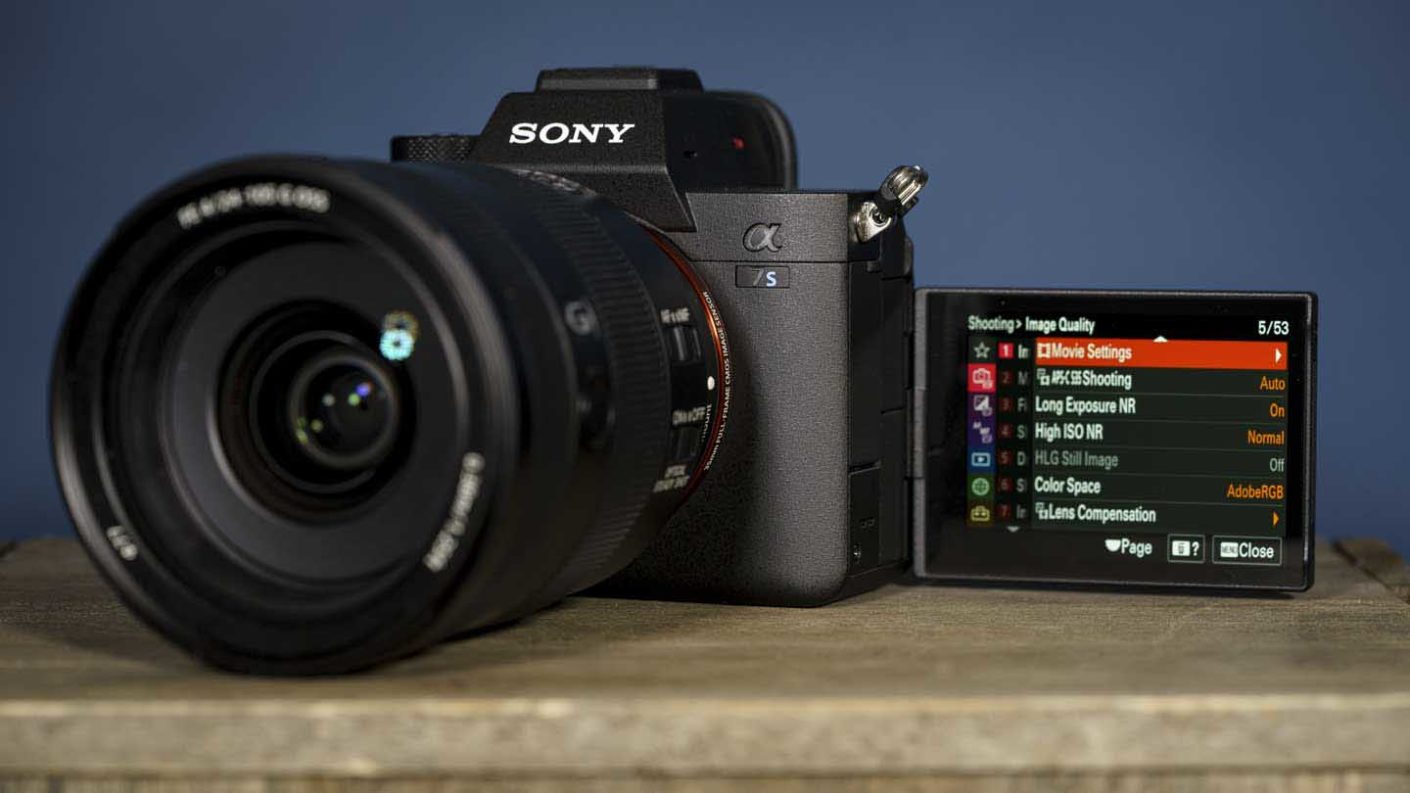
Specification
- Camera type: Full-frame mirrorless
- Announced: 28th July 2020
- Sensor: Full-frame 12.1Mp BSI CMOS
- Processing engine: Bionz XR
- Sensitivity: Video: ISO 80-102,400 expandable ISO 40-409,600. ISO base in S-Log is ISO 640 but it can be expanded down to ISO 160. Stills: ISO 80-102,400 expandable 40-409,600
- Autofocus system: Hybrid with 759 phase detection points and 425 contrast detection points, Real Time Eye AF (Human and Animal for stills, Human for video)
- Stabilisation: 5-axis IBIS and digital, up to 5.5EV shutter speed compensation
- Video resolution: 4K at up 120fps and 1080p at 240fps, 10-bit and 4:2:2 colour, 16-bit raw video over HDMI
- Video file formats: XAVC S,XAVC HS
- Video compression: XAVC S: MPEG-4 AVC/H.264, XAVC HS: MPEG-H HEVC/H.265
- 4K Video details: XAVC HS 4K 3840 x 2160 (4:2:0, 10bit, NTSC): 120p (200Mbps), 60p (150Mbps / 75Mbps / 45Mbps), 24p (100Mbps / 50Mbps / 30Mbps); 3840 x 2160 (4:2:0, 10bit, PAL): 100p (200Mbps), 50p (150Mbps / 75Mbps / 45Mbps); 3840 x 2160 (4:2:2, 10bit, NTSC): 120p (280Mbps), 60p (200Mbps / 100Mbps), 24p (100Mbps / 50Mbps); 3840 x 2160 (4:2:2, 10bit, PAL): 100p (280Mbps), 50p (200Mbps / 100Mbps) XAVC S 4K 3840 x 2160 (4:2:0, 8bit, NTSC): 120p (200Mbps), 60p (150Mbps), 30p (100Mbps / 60Mbps), 24p (100Mbps / 60Mbps); 3840 x 2160 (4:2:0, 8bit, PAL): 100p (200Mbps), 50p (150Mbps), 25p (100Mbps / 60Mbps); 3840 x 2160 (4:2:2, 10bit, NTSC): 120p (280Mbps), 60p (200Mbps), 30p (140Mbps), 24p (100Mbps); 3840 x 2160 (4:2:2, 10bit, PAL): 100p (280Mbps), 50p (200Mbps), 25p (140Mbps) XAVC S-I 4K 3840 x 2160 (4:2:2, 10bit, NTSC) (Approx.): 60p (600Mbps), 30p (300Mbps), 24p (240Mbps); 3840 x 2160 (4:2:2, 10bit, PAL): 50p (500Mbps), 25p (250Mbps)
- Gamut: S-Log2 and S-Log3, S-Gamut3.Cine and S-Gamut3
- Slow and Quick (S&Q) mode options: NTSC: 1fps,2fps,4fps,8fps,15fps,30fps,60fps,120fps, 240fps4, PAL: 1fps,2fps,3fps,6fps,12fps,25fps,50fps,100fps, 200fps
- Still File formats: Raw, JPG, HEIF
- Screen: 3-inch 1,440,000-dot vari-angle touchscreen
- Viewfinder: 0.64-inch type 9,437,184-dot OLED electronic viewfinder, with refresh rate up to 120fps, adjustable magnification up to 0.9x
- Maximum continuous shooting rate: 10fps with mechanical or electronic shutter for up to 1000 uncompressed raw files when a CFexpress Type 1 card is used
- Storage: Dual: SD/SDHC/SDXC (UHS-II) and CFexpress Type A
- Dimensions (W x H x D): 128.9 x 96.9 x 80.8mm / 5 1/8 x 3 7/8 x 3 1/4 inches
- Weight: 699g / 1 lb 8.7 oz
The Sony A7S III shares with its predecessor, the A7S II, a 5-axis in-body image stabilisation that can provide up to 5.5EV shutter speed compensation when shooting stills. Additionally, the camera also features SteadyShot Active, a digital stabilisation mode that applies a slight crop to the framing.
The A7S III’s handling and control arrangement is significantly better than that of its predecessor and any of Sony’s other cameras, making it a pleasure to use for videographers with experience.
It’s worth noting that the A7S III can produce excellent 4K video even without using some of its advanced features, making it a great option for those who are new to grading Log files or don’t have an external monitor/recording device.
£3800
€4200 / $3499For
- Large pixels for great low-light performance
- 4K full-pixel readout without binning and 10-bit depth 4:2:2 colour available in all recording formats
- Vari-angle touchscreen and class-leading electronic viewfinder
Sony A6700
Specification
- Camera type: Mirrorless
- Announced: 12th July 2023
- Lens mount: Sony E
- Sensor: 26MP APS-C BSI CMOS (23.5 x 15.6mm) sensor
- Video: 4K (3840 x 2160) 60p 10-bit 4:2:2, 120p 8-bit 4:2:0
- Continuous shooting rate: Hi+: 11fps
- Burst depth: In Hi+ 59 raw files, 1000+ Fine Jpegs or 44 raw and Jpeg files
- Stabilisation: 5-axis in-body image stabilisation giving up to 5EV shutter speed compensation
- Sensitivity: ISO 100-32000 (expandable to ISO 102400)
- Autofocus : Fast Hybrid AF with 759 phase-detection points and 25 contrast-detection points, Real-time Subject Recognition AF
- Subjects recognition modes: Human, Animal, Animal/Bird, Bird, Insect, Car/Train, Aeroplanes
- Viewfinder: 0.39-inch 2,359,000-dot OLED electronic viewfinder
- Screen: 3-inch 1.03-million-dot vari-angle touchscreen
- Storage: SD/SDHC/SDXC UHS-II
- Dimensions (W x H x D): 122.0 x 69.0 x 75.1 mm, or from grip to monitor: 122.0 x 69.0 x 63.6 mm / 4 7/8 x 2 3/4 x 3 inches or or from grip to monitor: 4 7/8 x 2 3/4 x 2 5/8 inches
- Weight: 409g / 14.5 oz
The Sony A6700 boasts a 5-axis IBIS system that provides up to 5 stops of shake correction. It compensates for movements along pitch, yaw, roll, horizontal, and vertical axes. The camera also features an Active Mode for video, which offers additional stabilization, albeit with a slightly narrower field of view.
In our tests, the Sony A6700’s IBIS system is particularly useful for handheld video recording and provided excellent quality footage.
£1450
$1398 / €1700 / £1550 / $1498 / €1800 / £1800 / $1798 / €2100For
- Very good image and video quality
- Fast AF system with advanced Subject Recognition
- Vari-angle touchscreen with full touch-control
Sony A6600
Specification
- Camera type: Mirrorless
- Announced: 28th August 2019
- Lens mount: Sony E
- Sensor: 24.2MP APS-C Exmor CMOS (23.5 x 15.6mm) sensor
- Video: 4K (3840 x 2160) 25/30p video capture with log profiles
- Continuous shooting rate: Hi+: 11fps, Hi: 8fps, Mid: 6fps, Lo: 3fps
- Burst depth: In Hi+ 46 raw files, 99 Extra Fine Jpegs or 44 raw and Jpeg files
- Stabilisation: 5-axis in-body image stabilisation
- Sensitivity: ISO 100-32000 (expandable to ISO 50 – 102400)
- Autofocus : Fast Hybrid AF (phase-detection and contrast-detection each with 425 points), Face Detection and Real-Time Eye AF
- Viewfinder: 0.39-inch 2,359,296-dot OLED electronic viewfinder
- Screen: 3-inch 921,600-dot tilting touchscreen
- Storage: SD/SDHC/SDXC UHS-I or Memory Stick PRO Duo, Memory Stick PRO-HG Duo, Memory Stick Micro (M2)
- Dimensions (W x H x D): 120.0 x 66.9 x 69.3mm / 4 3/4 x 2 3/4 x 2 3/4-inches
- Weight: 503g / 1lb 1.8oz with battery and memory card
The Sony A6600 is Sony’s flagship APS-C format mirrorless camera and it’s aimed at enthusiast photographers and videographers who want to shoot in a variety of conditions. With its 24.2MP Exmor CMOS image sensor, BIONZ X image processor, and front-end LSI, the A6600 boasts better still and video image quality, just like Sony’s full-frame cameras.
One of the most impressive features of the A6600 is its 5-axis in-body image stabilisation system that provides a 5.0-step shutter speed advantage, giving users the freedom to shoot in low light conditions.
The A6600 offers an autofocus acquisition time of just 0.02 seconds, with 425 phase-detection AF points that cover approximately 84% of the image area and 425 contrast-detection AF points.
With Sony’s Real-time Tracking and Real-time Eye AF technology, which includes AI-based object recognition to detect and process eye data in real-time, the A6600 promises improved accuracy, speed, and tracking performance of Eye AF for humans and animals, making it an ideal choice for portrait and pet photography.
The camera also features high-resolution internal 4K movie recording with full-pixel readout in Super 35mm format and built-in interval shooting for time-lapse videos. Additionally, the 180-degree tiltable, 3.0-type 921k-dot (approx.) LCD touch screen offers flexibility and convenience for photographers.
While the A6600 may not look like Sony’s A7 series of full-frame cameras, it packs similar technology that allows it to produce impressive results with a wide range of subjects.
£1450
€1600For
- Very good image and video quality
- Fast, accurate AF system
- Excellent battery life (800+ shots)
Which Nikon cameras have IBIS?
Nikon may have been late into the full-frame mirrorless market, but its Z series cameras offer superb in-body image stabilisation among a host of other features.
Nikon Z9
Specification
- Camera type: Full-frame mirrorless camera
- Announced: 28th October 2021
- Lens mount: Nikon Z
- Sensor: Full-frame (FX 35.9 x 23.9mm) 45.7MP stacked backside illuminated (BSI) sensor
- Processing engine: Expeed 7
- Stabilisation: 5-axis sensor shift giving 6EV shutter speed compensation
- Sensitivity: ISO 64-25,600, expandable to ISO 32-102,400
- Maximum continuous shooting rate: 20fps for up to 1000+ raw (high efficiency) files or 685 raw (high efficiency *) files, 30fps for up to 1000+ normal-quality Jpegs, or 120fps normal-quality 11Mp Jpegs
- Autofocus system: Hybrid with phase and contrast detection
- Phase detection points: 493
- AF-area modes: Pinpoint (available in photo mode only), single-point, dynamic-area (S, M, and L; available in photo mode only), wide-area (S and L), and auto-area AF, 3D-tracking (available in photo mode only), subject-tracking AF (available in video mode only)
- Video resolution: 8K (7680 x 4320): 30p (progressive)/25p/24p, 4K (3840 x 2160): 120p/100p/60p/50p/30p/25p/24p, Full HD (1920 x 1080): 120p/100p/60p/50p/30p/25p/24p
- Video file format: MOV, MP4
- Video compression: Apple ProRes 422 HQ (10 bit), H.265/HEVC (8 bit/10 bit), H.264/AVC (8 bit)
- Viewfinder: 0.5-inch 3.69-million-dot, 3,000-nit OLED viewfinder
- Screen: 3.2-inch 2,100,000-dot 4-way-tilting touch-screen
- Storage: Dual XQD/CFexpress
- Dimensions (W x H x D): 149 x 149.5 x 90.5 mm / 5.9 x 5.9 x 3.6 inches
- Weight: 1340 g / 2 lb. 15.3 oz.with battery and memory card but without body cap and accessory shoe cover, Body only: 1160g / 2 lb. 9 oz.
The Nikon Z9 is a beast of a camera, and among its many features is a sensor-shifting 5-axis in-body image stabilisation (IBIS) system that offers up to 6EV shutter speed compensation. And this is just one of its many, many capabilities.
Despite being a bit heavy for a mirrorless camera, it features twin grips, a weather-sealed body, and is relatively lightweight compared to the Nikon D6.
The camera’s 45.7Mp sensor produces exceptional images with a high level of detail and good noise control. Additionally, the Z9 can shoot at 20fps in full resolution for raw files, 30fps for JPEGs, and 120fps at 11Mp. Its advanced autofocus system with Eye-detection is also impressive.
At £5,299/€6,299, the Z9 is a competitive alternative to the Sony A1 and Canon EOS R3, surpassing the capabilities of the Nikon D6 and costing around £1,000 less than its competitors.
£5299
€6299For
- New 45.7Mp full-frame sensor sensor
- Advanced AF system
- Durable, weatherproof build
Nikon Z8
Specification
- Camera type: Full-frame mirrorless camera
- Announced: 10th May 2023
- Lens mount: Nikon Z
- Sensor: Full-frame (FX 35.9 x 23.9mm) 45.7MP stacked backside illuminated (BSI) sensor
- Processing engine: Expeed 7
- Sensitivity: ISO 64-25,600, expandable to ISO 32-102,400
- Maximum continuous shooting rate: 20fps for up to 1000+ raw (high efficiency) files or 685 raw (high efficiency *) files, 30fps for up to 1000+ normal-quality Jpegs, or 120fps normal-quality 11Mp Jpegs
- Autofocus system: Hybrid with phase and contrast detection
- Phase detection points: 493
- Subject detection: People (eyes, faces, head and torso), animals (whole bodies and heads and eyes for cats, dogs, birds and ‘other animals’), cars, motorbikes, bicycles, trains and aeroplanes.
- Stabilisation: 5-axis in-body image stabilisation (IBIS) that can work in tandem with lens-based stabilisation (VR)
- Video resolution: 8K (7680 x 4320): 30p (progressive)/25p/24p, 4K (3840 x 2160): 120p/100p/60p/50p/30p/25p/24p, Full HD (1920 x 1080): 120p/100p/60p/50p/30p/25p/24p
- Video file format: MOV, MP4, NEV
- Video compression: N-RAW (12 bit), Apple ProRes RAW HQ (12 bit), Apple ProRes 422 HQ (10 bit), H.265/HEVC (8 bit/10 bit), H.264/AVC (8 bit)
- Viewfinder: 0.5-inch 3.69-million-dot, 3,000-nit OLED viewfinder
- Screen: 3.2-inch 2,100,000-dot 4-way-tilting touch-screen
- Storage: Dual XQD/CFexpress
- Dimensions (W x H x D): 144 x 118.5 x 83mm / 5.7 x 4.7 x 3.3 inches
- Weight: 910g / 2 lb. 0.1 oz. with battery and memory card but without body cap and accessory shoe cover, 820g / 1 lb. 13 oz. body only
The Nikon Z8’s IBIS system provides 5.5 stops of 5-axis image stabilization, which works in tandem with Nikon’s lens-based stabilization (VR). Shooting with the Z8’s IBIS enabled, we were able to get sharp images handheld at shutter speeds as slow as 1/5sec. In fact, with the Z 24-70mm f/4 S at the 70mm end of the lens, our reviews editor was able to get around 50-60% of her images sharp when handholding the Z8 with a shutter speed of 1/4sec.
£3999
$3997For
- Smaller & lighter body than Nikon Z9
- Advanced AF system with subject detection
- Weatherproof build
Nikon Z6 II
Specification
- Camera type: Full-frame mirrorless camera
- Announced: 14th October 2020
- Lens mount: Nikon Z
- Sensor: Full-frame (FX 35.9 x 23.9mm) 24.5MP backside illuminated (BSI) sensor
- Processing engine: Dual Expeed 6
- Stabilisation: 5-axis in-body VR
- Sensitivity: ISO 100-51,200, expandable to ISO 50-204,800
- Maximum continuous shooting rate: 14fps for up to 200Jpegs or 124 12-bit uncompressed raw files
- Autofocus system: Hybrid with phase and contrast detection
- Phase detection points: 273
- Video resolution: 4K (3840 x 2160) 30/25/24p (60P to come with free firmware update in Feb 2021), Full-HD (1920 x 1080) 120/100/60/50/30/25/24p, Slow-motion mode 1920 x 1080 30p x4/25p x4/24p x5
- Viewfinder: 0.5-inch 3.69-million-dot electronic viewfinder
- Screen: 3.2-inch 2,100,000-dot tilting touch-screen
- Storage: Dual slot 1 XQD/CFexpress and 1 SD/SDHC/SDXC
- Dimensions (W x H x D): 134 x 100.5 x 69.5mm / 5.3 x 4 x 2.8-inches
- Weight: 705g with battery and memory card but without body cap, 615g body only
Nikon’s 5-axis in-body stabilisation (VR) was first introduced when the full-frame mirrorless Z6 and Z7 debuted in 2018, while their DSLRs have traditionally used lens-based stabilisation (VR). The Z6 II continues with this feature, offering up to 5EV shutter speed compensation.
With a lower resolution than the Z7 II, the Z6 II’s pixels gather more light, making it an excellent performer in low light conditions, which is further aided by its in-body image stabilisation.
While existing Nikon Z6 users may not be convinced to upgrade, the Z6 II’s features such as dual card slots, dual processors, 14fps shooting and eye AF for humans and animals in video mode keep Nikon competitive in the mirrorless camera market. With its solid build and well-designed control arrangement, the Z6 II is a highly enjoyable camera to use and an excellent all-rounder.
£1999
€2262For
- High-quality sensor
- Excellent user interface and control layout
- Weatherproof build
Nikon Z7 II
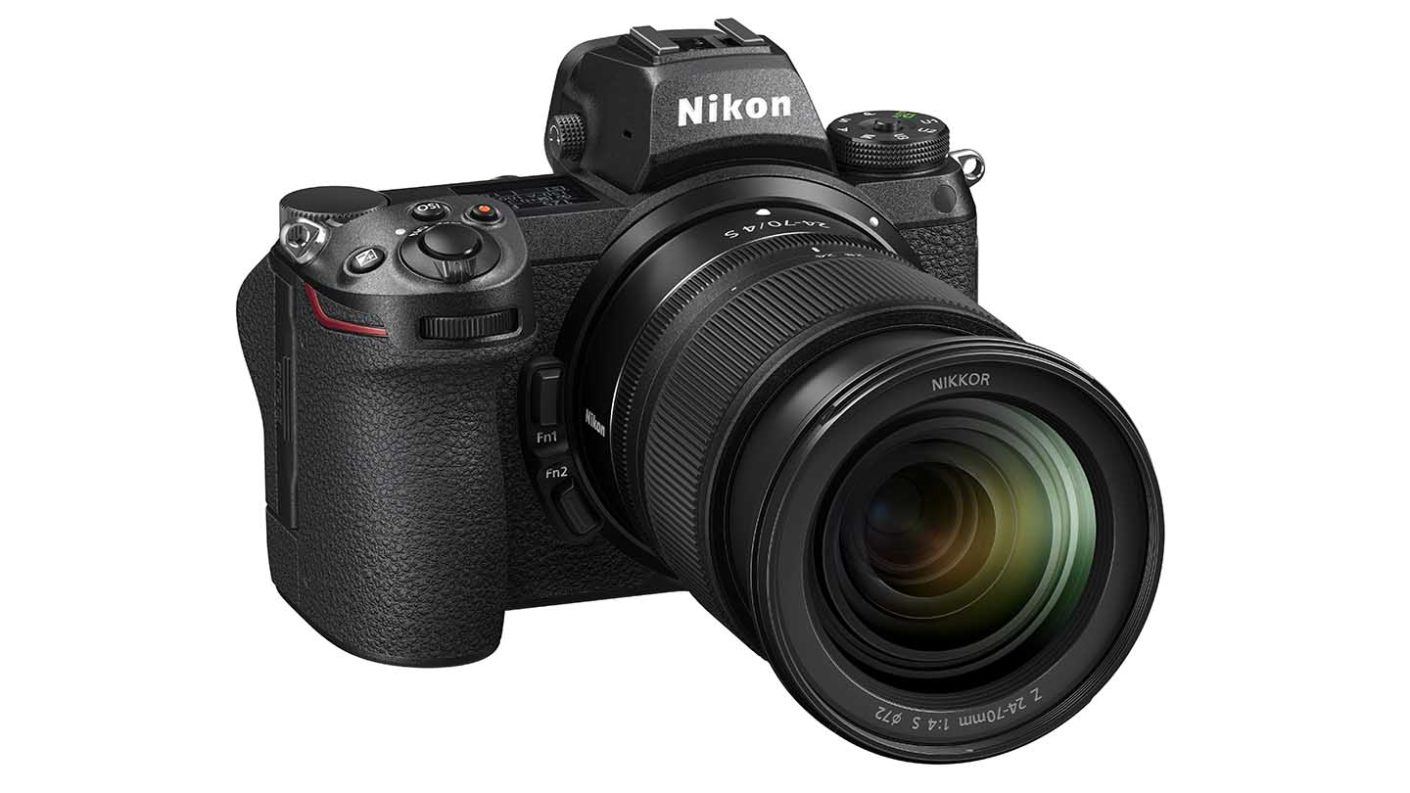
Specification
- Camera type: Full-frame mirrorless camera
- Announced: 14th October 2020
- Lens mount: Nikon Z
- Sensor: Full-frame (FX 35.9 x 23.9mm) 45.7MP backside illuminated (BSI) sensor
- Processing engine: Dual Expeed 6
- Stabilisation: 5-axis in-body VR
- Sensitivity: ISO 64-25,600, expandable to ISO 32-102,400
- Maximum continuous shooting rate: 10fps for up to 200Jpegs or 77 12-bit uncompressed raw files, 9fps with 14-bit raw files
- Autofocus system: Hybrid with phase and contrast detection
- Phase detection points: 493
- Video resolution: 4K (3840 x 2160) 60/50/30/25/24p, Full-HD (1920 x 1080) 120/100/60/50/30/25/24p, Slow-motion mode 1920 x 1080 30p x4/25p x4/24p
- Viewfinder: 0.5-inch 3.69-million-dot electronic viewfinder
- Screen: 3.2-inch 2,100,000-dot tilting touch-screen
- Storage: Dual slot 1 XQD/CFexpress and 1 SD/SDHC/SDXC
- Dimensions (W x H x D): 134 x 100.5 x 69.5mm / 5.3 x 4 x 2.8-inches
- Weight: 705g with battery and memory card but without body cap, 615g body only
Nikon’s first full-frame mirrorless cameras introduced a new in-camera stabilisation system for the company.
It provides 5-axis correction for accidental movement and can offer up to 5EV of shutter speed compensation. This system can also work with VR (vibration reduction) systems in Nikon F-mount lenses that are mounted through an adapter.
In addition to the Z6 II, the Nikon Z7 II has the same 5-axis in-body VR, which is highly effective in practice. In our review, we were able to achieve sharp hand-held images with the Nikkor Z 24-70mm f/4 S mounted and the VR set to ‘Normal’ rather than ‘Sport’ at shutter speeds about 5EV slower than normal with a hit rate of approximately 50%. This is a major advantage for anyone who wants to capture sharp landscape or low-light images without having to carry a tripod.
£2999
€3442 / $2996.95For
- High-quality sensor
- Excellent user interface and control layout
- Weatherproof build
Nikon Z6
Specification
- Camera type: Full-frame (FX) mirrorless
- Announced: 23rd August 2018
- Lens mount: Nikon Z
- Sensor: Full-frame (FX) 24.5Mp backside illuminated (BSI) sensor
- Autofocus system: Hybrid with phase and contrast detection
- Phase detection points: 273
- Viewfinder: 0.39-inch 2,360,000-dot OLED electronic viewfinder
- Screen: 3.2-inch 2,100,000-dot tilting touch-screen
- Dimensions (W x H x D): 134 x 100.5 x 67.5mm / 5.3 x 4 x 2.7-inches
- Weight: 675 g / 1 lb. 7.9 oz with battery and memory card but without body cap, 85 g/1 lb. 4.7 oz. camera body only
The Nikon Z6 breaks from tradition with its built-in 5-axis stabilisation system, providing 5EV of shutter speed compensation. This in-body image stabilisation (IBIS) eliminates the need for Nikon’s VR system in lenses, reducing size, weight, and price. Alongside the Sony A7 III, the Z6 is an excellent all-around camera, with IBIS being just one of its signature features. Nikon has even released a firmware update enabling the camera to shoot raw video since its launch.
The Z6 offers exceptional value for a full-frame camera with many features and is the camera many Nikon photographers have been waiting for.
With the handling of a Nikon DSLR and the advantages of a mirrorless camera, the Z6 offers a superb electronic viewfinder that rivals an optical viewfinder.
£2079
$1996.95For
- Superb quality images
- Excellent weather-sealing and build quality
- Growing range of very high-quality lenses
Nikon Z7
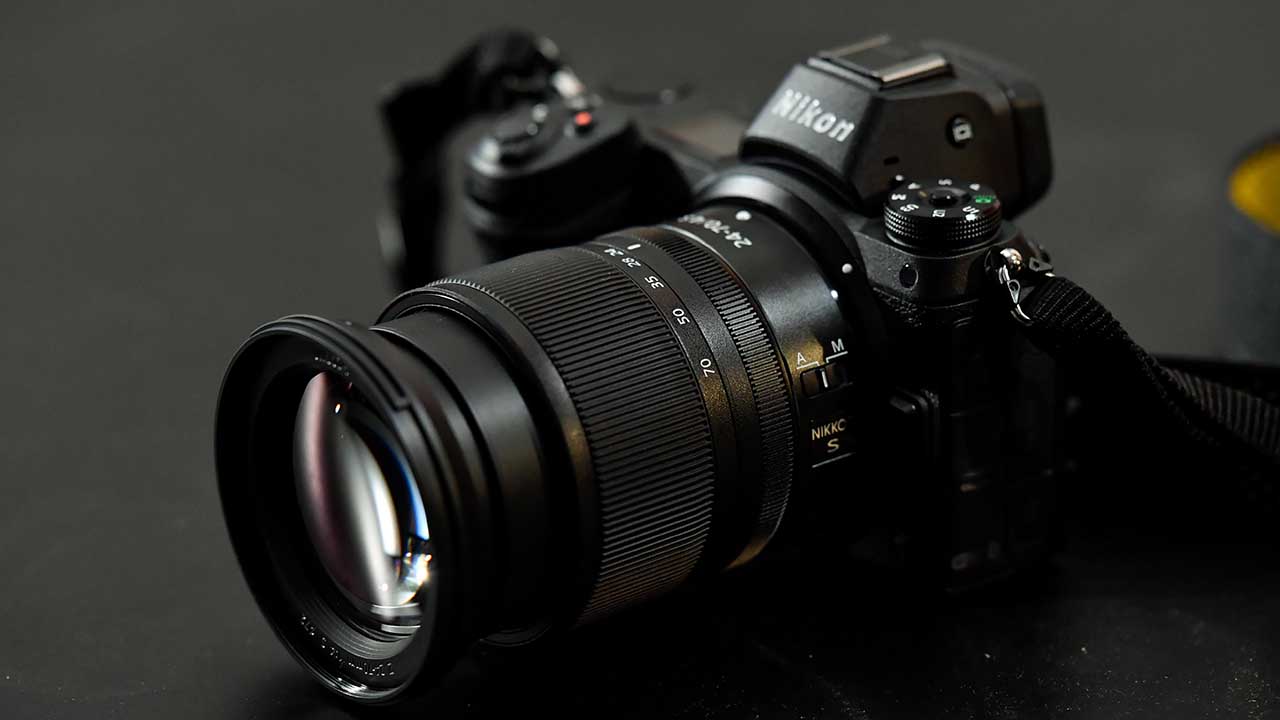
Specification
- Camera type: Full-frame mirrorless camera
- Sensor: Full-frame (FX) 45.7MP backside illuminated (BSI) sensor
- Lens mount: Nikon Z
- Autofocus system: Hybrid with phase and contrast detection
- Phase detection points: 493
- Storage: XQD/CFexpress
- Viewfinder: 0.5-inch 3.69-million-dot electronic viewfinder
- Screen: 3.2-inch 2,100,000-dot tilting touch-screen
- Dimensions (W x H x D): 134 x 100.5 x 67.5mm / 5.3 x 4 x 2.7-inches
- Weight: 675 g / 1 lb. 7.9 oz with battery and memory card but without body cap, 585g/1 lb. 4.7 oz. body only
Nikon’s Z-series mirrorless cameras feature a 5-axis built-in stabilisation system that is designed to work with VR lenses mounted via an adapter. Unlike Nikon’s DSLRs that rely on lens-based stabilisation, the in-body stabilisation system provides more freedom to photographers to shoot in situations where a tripod is not practical.
Our tests on both the Z7 and Z6 cameras showed that the in-body image stabilisation system performed exceptionally well. We were able to get consistently sharp images while hand-holding the camera at around 1/8-1/6sec at the 70mm end of the Nikkor Z 24-70mm f/4 S lens. Some images were even sharp at 1/5sec when examining them at 100% on-screen. This feature provides photographers with more creative freedom in their shooting and is a significant advantage of the Z-series mirrorless cameras.
£2299
$3399.00For
- High-quality sensor
- Excellent user interface and control layout
- Weatherproof build
Nikon Z5
Specification
- Camera type: Full-frame (FX) mirrorless
- Announced: 21st July 2020
- Lens mount: Nikon Z
- Sensor: 24.3Mp full-frame CMOS
- Autofocus system: 273-point Hybrid (combines phase and contrast detection) with Eye AF for humans and animals
- Stabilisation: 5-axis in body
- Viewfinder: Electronic 0.39-inch 3,690,000-dot OLED
- Screen: 3.2-inch 1,040,000-dot tilting touch-screen
- Maximum video resolution: 4K (with 1.7x crop)
- Maximum continuous shooting rate: 4.5fps
- Storage: Dual SD/SDHC/SDXC UHS-II
- Connectivity : Wi-Fi, Bluetooth, SnapBridge
- Dimensions (W x H x D): 134 x 100.5 x 69.5mm (5.3 x 4.0 x 2.8inches)
- Weight: 590g/ 1 lb. 4.9 oz body only, 675g / 1 lb. 7.9 oz with battery and memory card but without body cap
With its hybrid autofocus system, the Nikon Z5 offers 273 user-selectable autofocus (AF) points and has phase detection pixels on its sensor.
One of the camera’s standout features is the Eye-Detection AF, which can identify and focus on human eyes, as well as Animal-Detection AF that can lock onto cats’ and dogs’ eyes for sharp and accurate focus.
£1719
€1999 / $1397For
- Compact size and full-frame sensor
- Nikon Z mount
- Best in class viewfinder
Nikon Z f
Specification
- Camera type: Full-frame mirrorless camera
- Announced: 20th September 2023
- Lens mount: Nikon Z
- Sensor: Full-frame (FX 35.9 x 23.9mm) 24.5MP backside illuminated (BSI) sensor
- Processing engine: Expeed 7
- Sensitivity: ISO 100-64,000
- Maximum continuous shooting rate: 7.8fps raw and Jpeg files, 30fps Jpegs
- Autofocus system: Hybrid with phase and contrast detection
- Selectable AF points: 299 covering 89% by 96% of the frame
- Subject detection: People (eyes, faces, head and torso), animals (whole bodies and heads and eyes for cats, dogs, birds and ‘other animals’), cars, motorbikes, bicycles, trains and aeroplanes.
- Stabilisation: Up to 8EV, 5-axis in-body image stabilisation (IBIS) that can work in tandem with lens-based stabilisation (VR)
- Video resolution: 3840 x 2160 (4K UHD): 60p/50p/30p/25p/24p, 1920 x 1080: 120p/100p/60p/50p/30p/25p/24p
- Video file format and compression: MOV, MP4, H.265/HEVC (8 bit/10 bit), H.264/AVC (8 bit)
- Viewfinder: 0.5-inch 3.69-million-dot OLED viewfinder
- Screen: 3.2-inch 2,100,000-dot vari-angle touch-screen
- Picture Controls: Auto , Standard , Neutral , Vivid , Monochrome , Flat Monochrome , Deep Tone Monochrome , Portrait , Rich Tone Portrait , Landscape , Flat Creative Picture Controls (Dream, Morning, Pop, Sunday, Somber, Dramatic, Silence, Bleached, Melancholic, Pure, Denim, Toy, Sepia, Blue, Red, Pink, Charcoal, Graphite, Binary, Carbon)
- Storage: SD/SDHC/SDXC (UHS-II) and microSD (UHS-I)
- Battery: EN-EL15c
- Dimensions: 144 x 103 x 49 mm / 5.7 x 4.1 x 2 inches
- Weight: 710 g / 1 lb. 9.1 oz
The Nikon Z f is equipped with Nikon’s most advanced IBIS system to date, offering up to 8.0 stops of stabilization which, again, works in tandem with Nikon’s lens-based stabilization.
Nikon also introduced a new Focus Point VR feature in the Zf. This feature tells the camera to prioritise the area under the focus point for stabilisation, and it works with both still or moving subjects. The Nikon Zf also debuts some improvements to Nikon’s the VR system performance
Overall, it stands out as potentially one of the best vibration reduction systems available in a mirrorless camera.
£2297
€2599For
- Magnesium alloy body
- Traditional controls
- Expeed 7 processor
Which Panasonic cameras have IBIS?
Panasonic has positioned itself as a leader in video and hybrid shooting, and many of its Micro Four Thirds Lumix G series cameras, as well as its new full-frame S series cameras, offer in-body image stabilisation.
Panasonic Lumix GH6
Specification
- Camera type: Micro Four Thirds mirrorless
- Announced: 22nd February 2022
- Sensor: 25.21 Mp Live MOS Sensor (17.3 x 13mm)
- Key video specs: 5.8K (5760x4320) (4:3) at 29.97p, 200Mbps (4:2:0 10-bit LongGOP) (H.265/HEVC, LPCM), 5.7K (5728x3024) (17:9) at 59.94p, 300Mbps (4:2:0 10-bit LongGOP) (H.265/HEVC, LPCM), 4.4K (4352x3264) (4:3) at 59.94p, 300Mbps (4:2:0 10-bit LongGOP) (H.265/HEVC, LPCM), 4.4K (4352x3264) (4:3) at 59.94p, 300Mbps (4:2:0 10-bit LongGOP) (H.265/HEVC, LPCM), 4K (3840x2160) at 119.88p, 300Mbps (4:2:0 10-bit LongGOP) (H.265/HEVC, LPCM), FHD (1920x1080) t 239.76p, 800Mbps (4:2:2 10-bit ALL-Intra) / 200Mbps (4:2:2 10-bit LongGOP) (H.264/MPEG-4 AVC, LPCM
- Video format: MOV: H.264/MPEG-4 AVC, H.265/HEVC, Apple ProRes MP4: H.264/MPEG-4 AVC, H.265/HEVC
- Log Mode: V-Log L pre-installed
- Sensitivity range: Stills (normal): ISO 100-25600 (expandable to ISO 50-25600), (V-Log) ISO 250-12800 (expandable to ISO 125-12800), Video: (Normal) Dynamic Range Boost OFF (Base ISO 100): Auto / 50 (Extended ISO) / 100-12800 Dynamic Range Boost ON (Creative Video Mode) (Base ISO 800): Auto / 800-12800 (V-Log) Dynamic Range Boost OFF (Base ISO 250): Auto / 125 (Extended ISO) / 250-12800 Dynamic Range Boost ON (Creative Video Mode) (Base ISO 2000): Auto / 2000-12800 (Hybrid Log Gamma) Dynamic Range Boost OFF (Base ISO 250): Auto / 250-12800 Dynamic Range Boost ON (Creative Video Mode) (Base ISO 2000): Auto / 2000-12800
- AF system: Contrast detection with DFD
- Stabilisation: 5-axis Dual IS II giving up to 7.5EV shutter speed compensation
- Viewfinder: 3.68m-dot OLED with up to 120fps refresh rate
- Touchscreen: 3-inch 1.84m-dot tilt & free-angle touchscreen
- Storage: Dual slots, 1 CFexpress Type B, 1 UHS-II SD
- Maximum stills continuous shooting rate: Mechanical shutter: H: 14 frames/sec (AFS/MF), 8 frames/sec (AFC) (with Live View) M: 6 frames/sec (AFS/MF) (with Live View), 5 frames/sec (AFC) (with Live View) L: 2 frames/sec (AFS/MF/AFC) (with Live View) Electronic shutter: SH75: 75 frames/sec (AFS/MF) SH60: 60 frames/sec (AFS/MF) SH20: 20 frames/sec (AFS/MF) H: 14 frames/sec (AFS/MF), 7 frames/sec (AFC) (with Live View) M: 6 frames/sec (AFS/MF) (with Live View), 5 frames/sec (AFC) (with Live View) L: 2 frames/sec (AFS/MF/AFC) (with Live View)
- Dimensions (HxWxD): 100.3 x 138.4 x 99.6 mm (excluding protrusions)
- Weight: 739g with SD card and battery
The Lumix GH6 comes with a new and improved 5-axis gyro sensor that uses an advanced algorithm to provide 7.5 stops of stabilisation on its own, called Body I.S. Additionally, the camera has Dual I.S. 2 that detects the type of movement and applies compensation accordingly, whether it’s panning, tilting or hand-shake.
The camera’s Body I.S. feature works even when a lens without stabilisation is mounted. The GH6 also has digital stabilisation for video recording, albeit with a slight crop applied to the framing. Furthermore, the stabilisation system enables a High Resolution mode that captures 8 images while the sensor is shifted using the Image Stabiliser mechanism, resulting in a 100Mp-equivalent image. This mode can be used without a tripod, and the images can be saved in raw and Jpeg format.
£2000
$2199.99 / €2199.99For
- Extensive array of video features
- Excellent stabilisation system
- Excellent image quality for the sensor size
Panasonic Lumix GH5 II

Specification
- Camera type: Micro Four Thirds mirrorless
- Announced: 25th May 2021
- Sensor: 20.3 Mp Live MOS Sensor
- Maximum video resolution: C4K (4096x2160)
- Video Quality: 59.94p, 200Mbps (4:2:0 10-bit LongGOP) (H.265/HEVC, LPCM, High-Res Audio), 59.94p, 150Mbps (4:2:0 8-bit LongGOP) (H.264/MPEG-4 AVC, LPCM, High-Res Audio), 29.97p, 400Mbps (4:2:2 10-bit ALL-Intra) / 150Mbps (4:2:2 10-bit LongGOP) / 100Mbps (4:2:0 8-bit LongGOP) (H.264/MPEG-4 AVC, LPCM, High-Res Audio), 23.98p, 400Mbps (4:2:2 10-bit ALL-Intra) / 150Mbps (4:2:2 10-bit LongGOP) / 100Mbps (4:2:0 8-bit LongGOP) (H.264/MPEG-4 AVC, LPCM, High-Res Audio)
- Video format: MOV: H.264/MPEG-4 AVC, H.265/HEVC , MP4: H.264/MPEG-4 AVC, H.265/HEVC
- Log Mode: V-Log L pre-installed
- Sensitivity range: Stills: ISO 200-25600 (expandable to ISO 100-25600), Video: ISO 200-12800 (expandable to ISO 100-12800)
- Stabilisation: 5-axis Dual IS II giving 6.5EV shutter speed compensation
- Viewfinder: 3.68m-dot OLED with 60/120fps refresh rate
- Touchscreen: 3-inch 1.84m-dot Free-angle touchscreen
- Storage: Dual UHS-II SD slots
- Maximum stills continuous shooting rate: AFS/MF: 12 frames/sec, AFC: H: 9 frames/sec (with Live View), 6K Photo: 30 frames/sec, 4K Photo: 60 frames/sec, 30 frames/sec
- Dimensions: 138.5 x 98.1 x 87.4 mm / 5.45 x 3.86 x 3.44 inch (excluding protrusions)
- Weight: 727g / 1.60 lb with SD card and battery
The Lumix GH5 Mark II comes with in-body image stabilisation (IBIS) like its predecessor, the Panasonic GH5, but the IBIS has been improved to offer a shutter speed compensation of up to 6.5EV.
Panasonic has adapted the stabilisation algorithm used by the S1H for better video stability, and the GH5 II can now record C4K or 4K video at 60p 4:2:0 10-bit to a compatible SD card, while simultaneously outputting 4K 4:2:2 10-bit video to an HDMI connected device.
The GH5M2 can record internal footage up to 4K 60p and 4:2:2 10-bit 30p, and it features 4K/6K Anamorphic modes. Unlike its predecessor, the GH5M2 uses the entire sensor area for capturing video, so the footage is uncropped.
In addition, the GH5M2 offers wireless Full HD 60p video live streaming via the Lumix Sync smartphone app or direct connection to a Wi-Fi router. A firmware update expected later in the year will add RTP/RTSP wired IP streaming.
£1499
$2100For
- Extensive array of features
- Excellent stabilisation system
- Simple live streaming via smartphone
Panasonic Lumix S5II
Specification
- Camera type: Mirrorless
- Announced: 4th January 2023
- Sensor: 24.2Mp full-frame (35.6 x 23.8mm) CMOS sensor
- Lens mount: L
- Construction: Magnesium alloy with dust and splash resistant seals
- Autofocus system: Hybrid (contrast and phase detection) with 779 points
- Stabilisation: 5 axis in-body IS to 5EV, 6.5 with Dual IS
- Screen: 3-inch 1.84-million-dot vari-angle touchscreen
- Viewfinder: 3.68-million-dot OLED electronic viewfinder with 0.74x magnification
- Key video specifications: 6K (5952x3968) (3:2) 29.97p, 200Mbps (4:2:0 10-bit LongGOP) (H.265/HEVC, LPCM) or 23.98p, 200Mbps (4:2:0 10-bit LongGOP) (H.265/HEVC, LPCM), 6K (5952x3136) (17:9) 29.97p, 200Mbps (4:2:0 10-bit LongGOP) (H.265/HEVC, LPCM) or 23.98p, 200Mbps (4:2:0 10-bit LongGOP) (H.265/HEVC, LPCM), 5.9K (5888x3312) (16:9) 29.97p, 200Mbps (4:2:0 10-bit LongGOP) (H.265/HEVC, LPCM) or 23.98p, 200Mbps (4:2:0 10-bit LongGOP) (H.265/HEVC, LPCM), C4K (4096x2160) 29.97p, 150Mbps (4:2:2 10-bit LongGOP) (H.264/MPEG-4 AVC, LPCM) or 29.97p, 150Mbps (4:2:0 10-bit LongGOP) (H.265/HEVC, LPCM) or 23.98p, 150Mbps (4:2:2 10-bit LongGOP) (H.264/MPEG-4 AVC, LPCM) or 23.98p, 150Mbps (4:2:0 10-bit LongGOP) (H.265/HEVC, LPCM), [4K] 3840x2160 29.97p, 150Mbps (4:2:2 10-bit LongGOP) (H.264/MPEG-4 AVC, LPCM) or 29.97p, 150Mbps (4:2:0 10-bit LongGOP) (H.265/HEVC, LPCM) or 23.98p, 150Mbps (4:2:2 10-bit LongGOP) (H.264/MPEG-4 AVC, LPCM) or 23.98p, 150Mbps (4:2:0 10-bit LongGOP) (H.265/HEVC, LPCM)
- Sensitivity: Dual native ISO (Auto, Low, High), Range: ISO100-51,200, expandable to ISO 50-204,800
- Shutter speed: Stills: 60-1/8,000sec, Bulb, Video: 1/2-1/16,000sec
- Maximum continuous shooting rate: Mechanical shutter: 9fps with S-AF, 7fps with C-AF or manual focus, Electronic shutter: 30fps with S-AF or C-AF
- Memory: Dual SD card slots, both UHS-II
- Battery life: LCD, LVF: 370 images, in Power Save LVF mode: 1,500 images
- Weight: 740g with memory card, hot shoe cover and battery
- Dimensions (WxHxD): 134.3x102.3x90.1mm
Panasonic’s Lumix S5II is an updated version of the Lumix S5, a full-frame mirrorless camera that was introduced as Panasonic’s smallest and most affordable option. The Lumix S5II features a hybrid autofocus (AF) system that combines phase detection with contrast detection, and offers extended video features such as internal 4:2:0 10-bit 6K (3:2) and 5.9K (16:9) footage at 30fps, as well as 4:2:2 C4K and 4K footage at up to 60fps.
In addition, the updated 5-axis in-body image stabilisation system does an excellent job of eliminating camera shake, compensating up to 5EV, or 6.5 with Dual IS. All in all, the Lumix S5II is an appealing option for anyone looking to get more serious about video on a full-frame camera, thanks to its improved AF system, advanced video features, and excellent stabilisation.
£1999
$1999 / €2199For
- Smaller than Panasonic's other full-frame cameras
- Phase detection focusing with subject detection
- V-log pre-installed
Panasonic Lumix S5
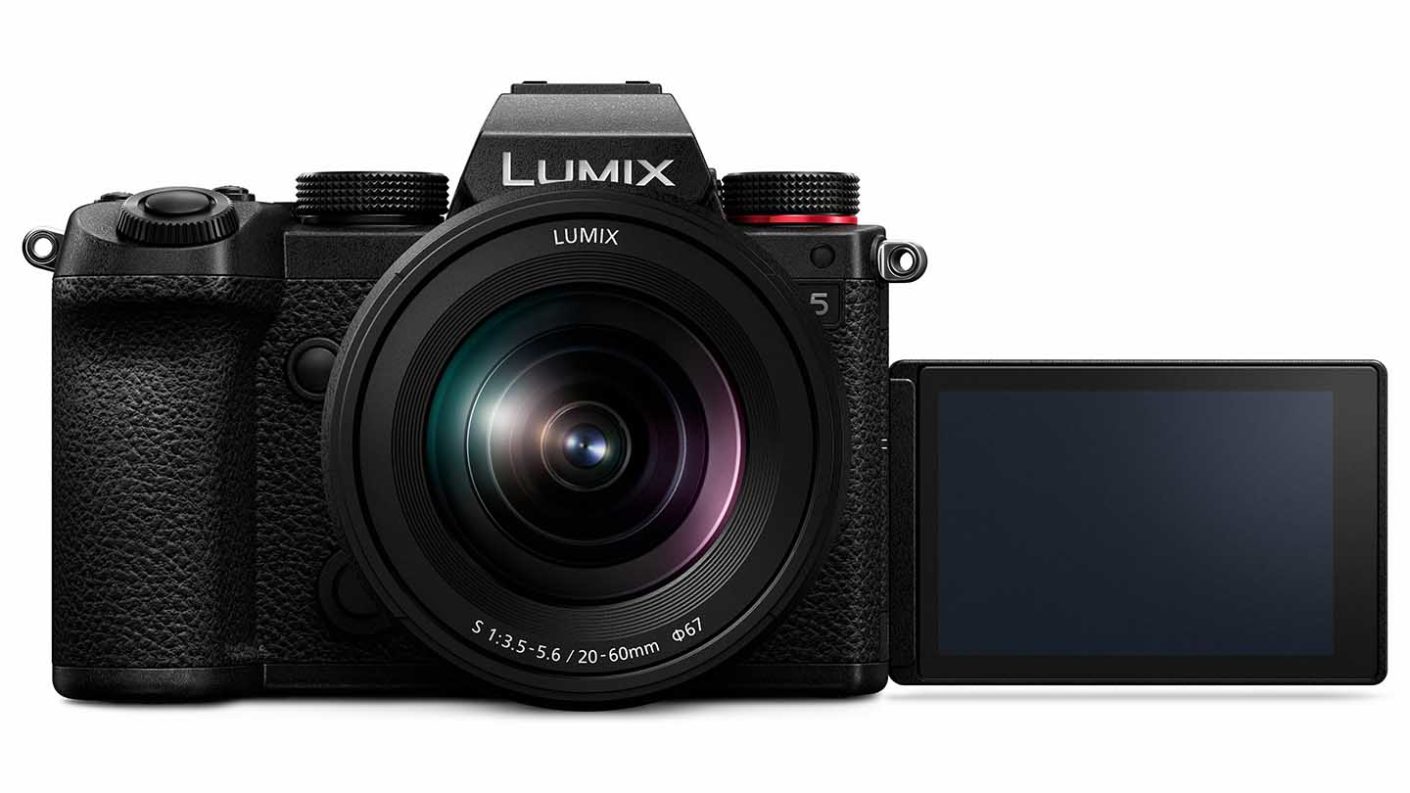
Specification
- Camera type: Mirrorless
- Announced: 2nd September 2020
- Sensor: 24.2Mp full-frame (35.6 x 23.8mm) CMOS sensor
- Lens mount: L
- Construction: Magnesium alloy with dust and splash resistant seals
- Stabilisation: 5 axis in-body IS to 5EV, 6.5 with Dual IS
- Screen: 3-inch 1,840,000-dot vari-angle touchscreen
- Viewfinder: 2,360,000-dot OLED electronic viewfinder with 0.74x magnification
- Key video specifications: 4K (3840x2160) 4:2:2 10-bit LongGOP H.264 29.97/23.98p/25p and 150Mbps for up to 30mins, 4K (3840x2160) 4:2:0 8-bit LongGOP H.264 29.97/23.98p/25p and 100Mbps unlimited, Full HD (1920x1080) 4:2:2 10-bit LongGOP H.264 59.94/29.97/23.98p/50/25p and 100Mbps unlimited
- Slow & Quick motion: Slow: 4K up to 60p in MP4, FHD up to 120p at full width or 180p with narrower angle of view, Quick: 4K to 1p
- Sensitivity: Dual native ISO 100, 6400, Range: ISO100-51,200, expandable to ISO 50-204,800. Dual-native ISO for video
- Shutter speed: 60-1/16,000sec, Bulb to 30mins
- Maximum continuous shooting rate: AF-S or manual focus: 7fps, AF-C: 5fps, 6K Photo 30fps, 4K Photo: 60fps
- Memory: Dual SD card slots, 1 UHS-II, 1 UHS-I
- Weight: 714g with memory card and battery
- Dimensions (WxHxD): 132.6x97.1x81.9mm
The Panasonic S5 provides up to 5 stops of shutter speed compensation across 5 axes, but it can also go up to 6.5EV with lens-based IS.
Aside from its impressive stabilisation and video features, the Lumix S5 is also packed with a host of stills features. For instance, there’s a 96Mp High Resolution mode for raw and Jpeg images and Live View Composite mode, which can help capture stunning long exposure images.
One of the most remarkable things about the S5 is that it’s smaller than the Lumix GH5, despite having a larger sensor and mount. This is a testament to the engineers at Panasonic and their dedication to delivering a compact, yet powerful camera.
£1799
$1998For
- Smaller than the MFT Lumix GH5
- Viewfinder and vari-angle touchscreen
- V-log pre-installed
Panasonic S1
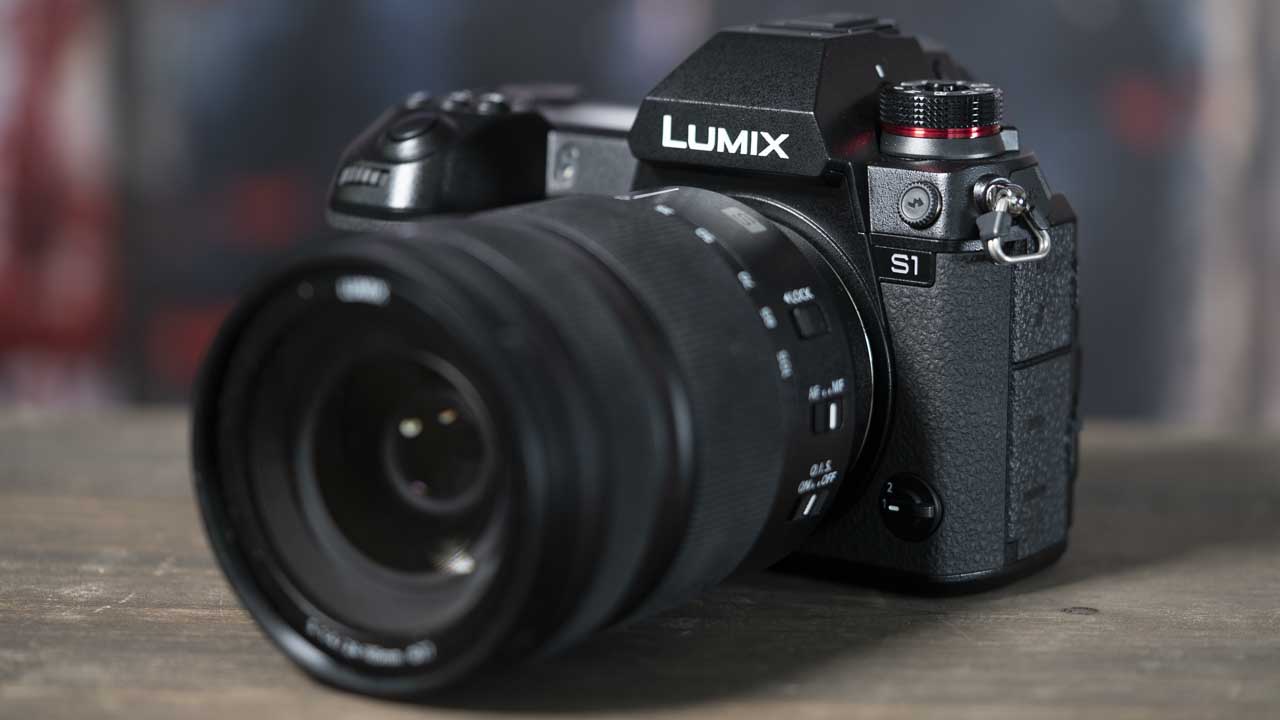
Specification
- Sensor: 24.2MP full-frame (23.8×35.6mm)
- Video: 4K (3840×2160) at 60fps and 150Mbps
- Stabilisation: 5-axis in-body stabilisation
- High Resolution Mode: 96MP (12,000 x 8,000-pixel) images
The Lumix S1 is a high-end camera designed for professionals and enthusiasts who want a customisable camera that delivers exceptional results. Its dual-tilting screen, first-rate viewfinder, fast autofocus system, and impressive video capabilities make it a versatile tool for photographers and videographers. One standout feature is its High Resolution mode, which produces 96Mp images by taking a sequence of shots with tiny sensor movements between each shot, merged into a single raw file.
The Panasonic S1 has a 24.2Mp full-frame sensor, with a native aspect ratio of 3:2 and the ability to shoot in multiple aspect ratios. It can shoot at a maximum of 6fps with continuous autofocus, or 9fps without C-AF, and in 4K/6K Photo mode, it can shoot at 60fps or 30fps, respectively. It’s a camera that takes some getting used to, but it’s worth it for those who want a versatile and customisable tool for both stills and video.
Its dual IS system also does a superb job stabilising both images and videos.
£2200
$2497.99For
- Solid construction
- 4K footage is very impressive
- AF system great at picking out small subjects
Panasonic Lumix G9II
Specification
- Camera type: Mirrorless Micro Four Thirds
- Announced: 12th Sepetmber 2023
- Sensor: 25.2Mp Four Thirds type (17.3 x 13.0mm) Live MOS
- Lens mount: Micro Four Thirds
- Autofocus system: Hybrid (contrast and phase detection) with 779 phase points, 315 contrast points
- Stabilisation: 5 axis in-body IS to 8EV, 7.5 with Dual IS
- Screen: 3-inch 1.84-million-dot vari-angle touchscreen
- Viewfinder: 3.68-million-dot OLED electronic viewfinder with 0.74x magnification
- Key video specifications: [5.8K] 5760x4320 (4:3) at 29.97p, 200Mbps (4:2:0 10-bit LongGOP) (H.265/HEVC, LPCM) or 23.98p, 200Mbps (4:2:0 10-bit LongGOP) (H.265/HEVC, LPCM), [5.7K] 5728x3024 (17:9) at up to 59.94p, 300Mbps (4:2:0 10-bit LongGOP) (H.265/HEVC, LPCM), [4.4K] 4352x3264 (4:3) at up to 59.94p, 300Mbps (4:2:0 10-bit LongGOP) (H.265/HEVC, LPCM), [C4K] 4096x2160 at up to 119.88p, 300Mbps (4:2:0 10-bit LongGOP) (H.265/HEVC, LPCM), 59.94p, 800Mbps (4:2:2 10-bit ALL-Intra) (H.264/MPEG-4 AVC, LPCM), 59.94p, 600Mbps (4:2:2 10-bit ALL-Intra) (H.264/MPEG-4 AVC, LPCM), 59.94p, 200Mbps (4:2:2 10-bit LongGOP) (H.264/MPEG-4 AVC, LPCM), 59.94p, 200Mbps (4:2:0 10-bit LongGOP) (H.265/HEVC, LPCM)
- Sensitivity: Stills: Normal: ISO 100-25600, extended to IOS 50, V-Log ISO 500-12,800, extended to ISO 125. Video: Normal: Sensor output is 60fps or less (Base ISO 100): 50 (Extended ISO) / 100-12800, Sensor output is 61fps or higher (Base ISO 100): 50 (Extended ISO) / 100-3200 / 4000-12800 (Extended ISO) V-Log: Sensor output is 60fps or less (Base ISO 500): A125-400 (Extended ISO) / 500-12800, Sensor output is 61fps or higher (Base ISO 250): 125-200 (Extended ISO) / 250-3200 / 4000-12800 (Extended ISO) Hybrid Log Gamma: Sensor output is 60fps or less (Base ISO 250): 250-12800 Sensor output is 61fps or higher (Base ISO 250): 250-3200 / 4000-12800 (Extended ISO)
- Shutter speed: Stills: 60-1/8,000sec, Electronic front curtain shutter: Bulb (Max. 30 minutes), 1/2,000 - 60 Electronic shutter: Bulb (Max. 60 sec), 1/32,000 - 60 Video: 1/25,000 - 1/25m Creative Video M mode / MF mode: 1/25,000 - 1/8
- Maximum continuous shooting rate: Mechanical shutter: H: 14 frames/sec (AFS/MF), 10 frames/sec (AFC) (with Live View), Electronic front curtain shutter: H: 14 frames/sec (AFS/MF), 9 frames/sec (AFC) (with Live View), Electronic shutter: SH75: 75 frames/sec (AFS/MF), SH60: 60 frames/sec (AFS/AFC/MF), SH75 PRE: 75 frames/sec (AFS/MF), SH60 PRE: 60 frames/sec (AFS/AFC/MF), SH20 PRE: 20 frames/sec (AFS/AFC/MF)
- Memory: Dual SD card slots, both UHS-II
- Battery life: With SD card: 370 images, 1300 images (Power Save LVF mode)
- Weight: 658g / 1.45 lb (Body, Hot Shoe Cover, Battery, SD Memory Card x 1) (excluding body cap), 575g / 1.27 lb (Body, Hot Shoe Cover) (excluding body cap)
- Dimensions (WxHxD): 134.3 x 102.3 x 90.1 mm / 5.29 x 4.03 x 3.55 inch (Body only, excluding protrusions)
The Panasonic Lumix G9 II is equipped with a sensor-shift IBIS system that has a CIPA image stabilization rating of 8 stops. This places it among the best you can buy. However, this drops to 7.5-stops with longer lenses. What’s more, the G9 II offers Dual I.S. 2, and advanced Active I.S.
Micro Four Thirds cameras have a strong legacy of solid IBIS systems, and the G9 II carries on this tradition.
£1699
€1899 / $1599For
- Phase detection focusing with subject detection
- V-log pre-installed
- Hand-held 100MP High Resolution mode
Panasonic G9
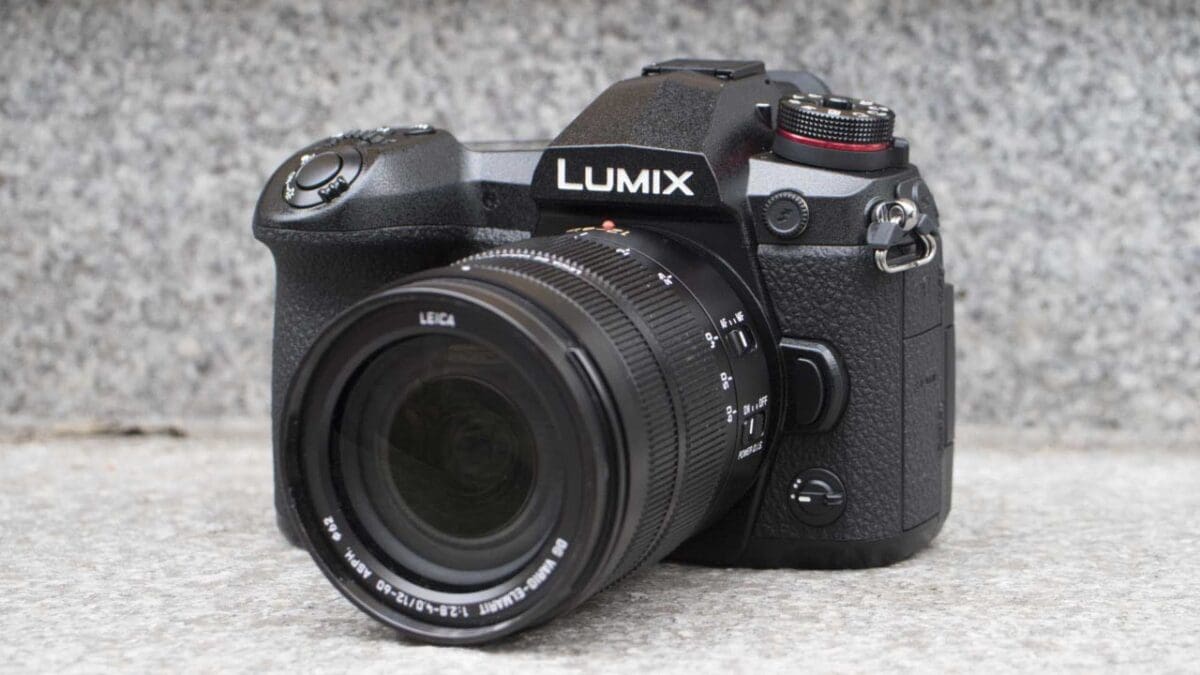
Specification
- Burst Mode (electronic shutter): 20fps with C-AF
- Burst Mode (electronic shutter): 60fps with S-AF
- Burst Mode (mechanical shutter): 9fps with C-AF
- Burst Mode (mechanical shutter): 12fps with S-AF
The Panasonic G9 is a versatile camera that offers a range of features to satisfy both stills and video shooters. One of its key features is the Dual IS system which combines 5-axis sensor shifting-stabilisation with lens-based stabilisation to produce stable shots. With Dual IS, the G9 can achieve a correction of 6.5EV at all focal lengths, which is comparable to the Olympus OM-D E-M1 Mark II.
In addition to its stabilisation capabilities, the G9 boasts an impressive autofocus system that quickly and accurately locks on to subjects, even in low-light and low-contrast situations. This is particularly useful for wildlife photography, especially when shooting in difficult lighting conditions or when the subject is heavily camouflaged.
£1499
For
- As fast as the Sony A9
- Excellent buffer
- Superb EVF and screen
- Stabilisation system rated at 6.5EV
- Weather-sealed
Panasonic Lumix GX9
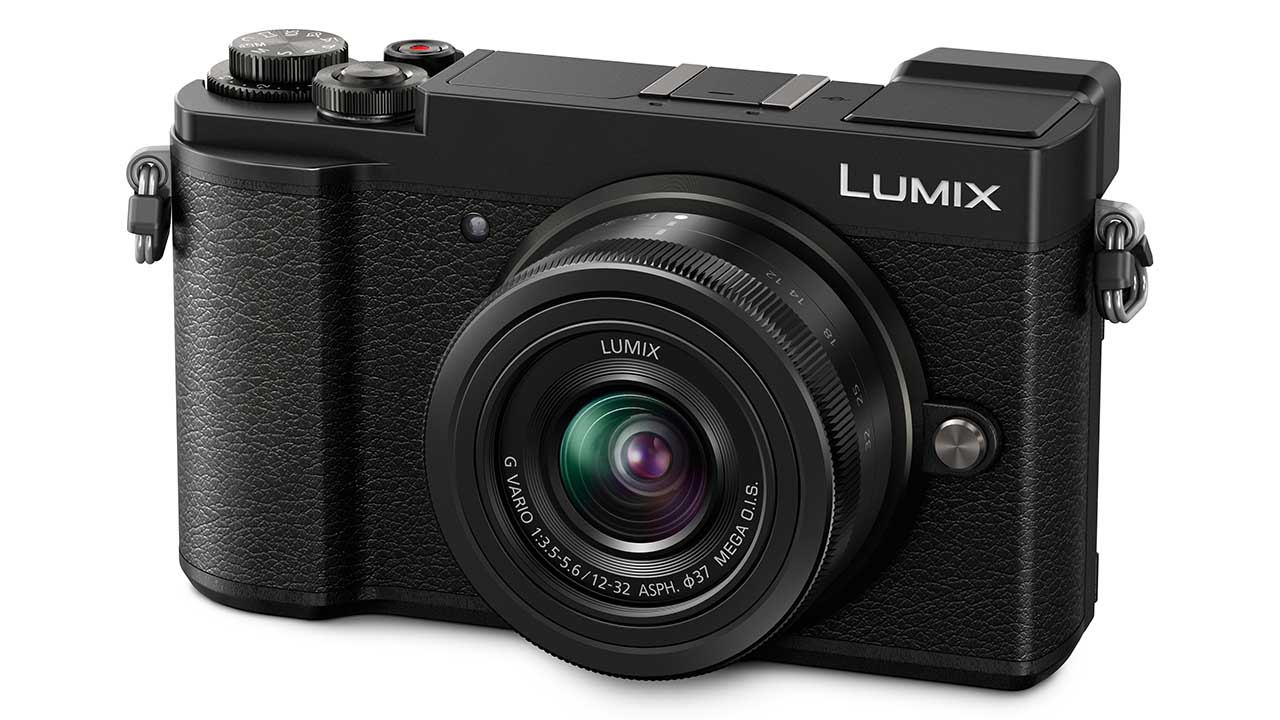
Specification
- Sensor: 20.3-megapixel Micro Four Thirds
- Stabilisation: Sensor-Shift, 5-Axis
- Sensitivity: 200 to 25600 (Extended: 100 to 25600)
- Video: UHD 4K (3840 x 2160) at 24.00p/29.97p [100 Mb/s]
- Viewfinder: 2,760,000-dot EVF
- Monitor: 3-inch 1,240,000-dot tilting touchscreen
Panasonic introduced the GX9 to sit in the middle of its range as a “premium street photography camera”. With its small body size and flat rangefinder type design, it’s also ideally suited as a travel camera – especially if you already own another Micro Four Thirds camera.
It houses a 20.3 megapixel Four Thirds sensor, without an anti-aliasing filter for increased detail resolution.
Like most Panasonic cameras, it features built-in sensor-shifting image stabilisation across five axes, making it one of the best cameras for street photography.
£599
$997For
- Small and lightweight
- Nice colours
- Tilting screen is great for shooting at odd angles
Which Fujifilm cameras have IBIS?
Fujifilm recently introduced in-body image stabilisation to both its APS-C X series cameras and to its medium format GFX line.
Fujifilm X-H2S
Specification
- Camera type: Mirrorless
- Announced: 31st May 2022
- Sensor: 26.16Mp APS-C (23.5 x 15.6mm) X-Trans CMOS 5 HS
- In body image stabilisation: 5-axis giving up to 7EV shutter speed compensation
- Processing engine: X-Processor 5
- Lens mount: Fujifilm X
- Sensitivity range: ISO 160-12,800 expandable to ISO 80-51,200
- Autofocus system: Intelligent Hybrid with up to 425 points plus subject detection for humans, animals, birds, automobiles, motorcycles, aeroplanes and trains
- Max continuous shooting rate: Electronic shutter: 40fps for 184 jpegs, 170 lossless compressed raw or 140 uncompressed raw, Mechanical shutter: 15fps for 1000+ jpegs, lossless compressed raw or 1000 uncompressed raw
- Max video resolution: 6.2K (6240x4160) 29.97/25/24/23.98p, DCI 4K (4096x2160) 59.94/50/29.97/25/24/23.98p or 120/100p in High Speed mode, 4K (3840x2160) 59.94/50/29.97/25/24/23.98p or 120/100p in High Speed mode
- Viewfinder: 0.5 inch 5.76 million-dot OLED Color Viewfinder with 100% coverage Eyepoint: approx. 24mm Diopter adjustment: -5~+3m-1 Magnification: 0.8× with 50mm lens
- Screen: Vari-angle 3-inch LCD with 1.62-million dots
- Dimensions: 136.3 x 92.9 x 84.6mm
- Storage: Dual: 1x CFexpress type B, 1x DS/SDHC/SDXC UHS-II
- Weight: 579g (body only), 660g with battery and card
The Fujifilm X-H2S packs a powerful 26.1MP X-Trans CMOS 5 HS sensor, marking the 5th generation of Fujifilm’s renowned X-Trans CMOS sensor technology. Unlike its predecessors, this sensor features a stacked design that enables lightning-fast readout times. According to Fujifilm, the new sensor is four times faster than its predecessor and standard backside-illuminated sensors.
The sensor works in tandem with the X-Processor 5, which is twice as fast as the previous engine, to deliver stunning performance. The X-H2S boasts an impressive maximum continuous shooting rate of 40fps at full-resolution with full autofocus capability, 6.2K video at 30p, 4K video at 120p, 120fps Live View, and enhanced rolling shutter control.
What’s more, the five-axis in-body image stabilisation (IBIS) mechanism has been updated with a new processor and sensing control function, delivering up to 7.0-stop shutter speed compensation.
£2499
$2499For
- 40fps continuous shooting with AF
- Subject detection at 40fps and during video
- 6.2K video
Fujifilm X-H2
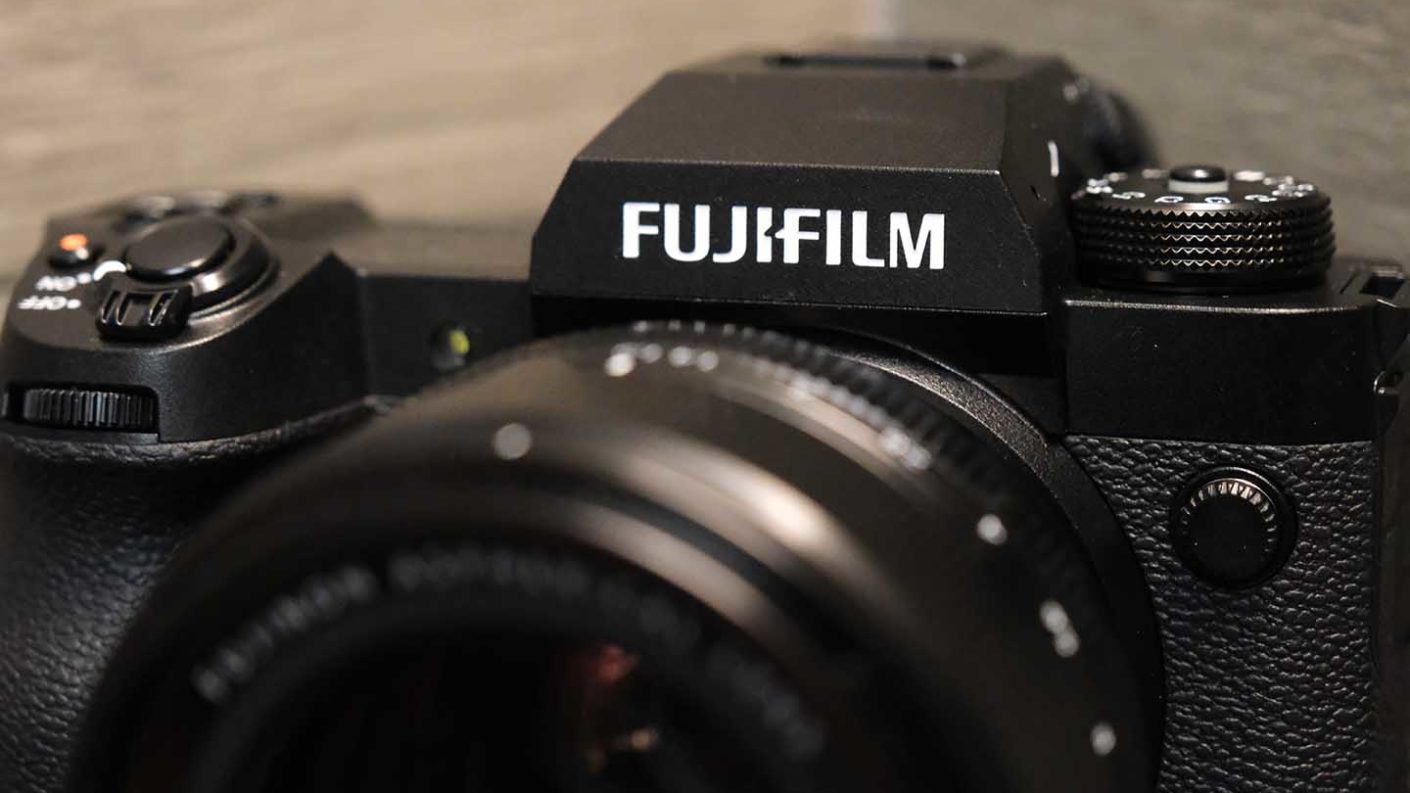
Specification
- Camera Type: Mirrorless
- Announced: September 8, 2022
- Lens Mount: Fujifilm X
- Sensor: 40-megapixel X-Trans5 BSI APS-C Imaging Sensor
- Processing Engine: X-Processor 5
- Video: 8K at 30p, 6.2K at up to 30p, DCI4K at up to 60p, HD at 240p Apple ProRes internally in 10-bit at 4:2:2
- Sensitivity: ISO 125 to 12,800 (expandable to ISO 64 to 51,200)
- IBIS: Up to 7 stops of Internal Body Image Stabilization
- Max Shutter Speed: 1/180,000 Max Shutter speed with electronic shutter
- Continuous Shooting: 15fps with mechanical shutter, 20fps with electronic shutter
- Viewfinder: 5.76-million-dot EVF with 0.8x magnification
- Rear Screen: 1.62 million-dot vari-angle LCD
- Memory: One CFexpress Type B memory card slot and one UHS-II SD memory card slot
The Fujifilm X-H2 shares a feature with its counterpart, the X-H2S, as it also includes 5-axis in-body image stabilisation that can compensate for up to 7 stops of shutter speed. This enables photographers and videographers to capture steady shots even when shooting handheld, regardless of the shooting conditions.
Fujifilm has also improved the shake detection of the X-H2’s IBIS, which is available for both stills and video mode.
£1899
$1999 / €2199Fujifilm X-T5
Specification
- Camera Type: Mirrorless
- Announced: 2nd November 2022
- Lens Mount: Fujifilm X
- Sensor: 40.2MP X-Transn5 BSI APS-C (23.5 x 15.6mm) Imaging Sensor
- Processing Engine: X-Processor 5
- Video: 6.2K (6240 x 3510) at up to 30p with 1.23x crop, DCI4K (4096 x 2160) at up to 60p with 1.14x crop, HD at 240p with 1.23x crop, 6.2K Apple ProRes externally in 10-bit at 4:2:2
- Sensitivity: ISO 125 to 12,800 (expandable to ISO 64 to 51,200)
- In-Body Image Stabilisation (IBIS): 5-axis giving up to 7 stops shutter speed compensation
- Max Shutter Speed: 1/180,000 with electronic shutter
- Continuous Shooting: 15fps with mechanical shutter, 20fps with electronic shutter (later with 1.29x crop)
- Viewfinder: 0.5-inch type 3.69-million-dot EVF with 0.8x magnification
- Rear Screen: 1.84 million-dot 3-way tilt LCD touchscreen
- Storage: 2x SD/SDHC/SDXV UHS-II
- Battery: NP-W235 Li-ion
- Dimensions (WxHxD): 129.5 x 91 x 63.8mm
- Weight: 557g with battery and memory card, 476g body only
Similar to its predecessor, the X-T4, the Fujifilm X-T5 incorporates an in-body image stabilisation system that compensates for up to 7 stops of shutter speed when using stabilised lenses. Additionally, the X-T5 now includes the Pixel Shift Multi-Shot mode, previously featured in the X-H2, which allows the camera’s IBIS system to shift the sensor between frames shot at 20fps. Combining these images using Fujifilm’s Pixel Shift Combiner software produces a 160-megapixel image.
The X-T3 lacked IBIS, unlike the X-H1, but the X-T4 rectified this by including a 5-axis IBIS system providing up to 6.5EV of shutter speed compensation, reduced in size by 30%. However, the X-T5 improves on its predecessor with an even better IBIS system.
£1699
$1799For
- Major step-up in resolution from the X-T4
- New subject detection system
- 3-way tilting screen
Fujifilm X-S10

Specification
- Camera type: Mirrorless
- Announced: 15th October 2020
- Sensor: 26.1MP X-Trans CMOS 4 APS-C sensor
- Processing engine: X-Processor 4
- Lens mount: X-Mount
- Sensitivity range: ISO 160-12,800 expandable to ISO 80-51200
- Viewfinder: 2.36-million-dot EVF (100% coverage) with 0.62x magnification
- Screen: Vari-angle 3-inch 1.04million-dot touchscreen LCD
- Autofocus system: Intelligent hybrid with up to 425 selectable AF points
- Continuous shooting: Mechanical Shutter: 8fps, Electronic Shutter: 20fps continuous shooting at full resolution with AF
- Max video resolution: DCI 4K (4096 x 2160) at 29.97/25/24/23.98fps, 4K/30p 4:2:0 8-bit, 4K/30p 4:2:2 10-bit video via the HDMI, Full-HD at up to 240p
- Storage: SD/SDHC/SDXC UHS-II
- Dimensions (WxHxD): 126.0x85.1x65.4mm
- Weight: 465g including battery and card
Although it’s positioned lower in Fujifilm’s camera range, the X-S10 comes with impressive in-body image stabilisation (IBIS) capabilities. The smaller IBIS unit is a significant achievement by Fuji’s engineers and offers up to 6EV of shutter speed compensation, surpassing the maximum compensation of 5EV by the Fujifilm X-H1. However, the X-S10 falls just 0.5EV short of the X-T4’s impressive 6.5EV compensation capability, which is possible with certain lenses.
According to Fujifilm, the X-S10 can compensate for shutter speeds that are up to 6EV slower than usual when hand-held, though the amount of compensation may vary from person to person and depending on the lens used.
During testing with the XF18-55mmF2.8-4 R LM OIS kit lens (which has a built-in stabilisation system) at 55mm, around 50% of the shots taken at a shutter speed of 1/2-second were perfectly sharp, resulting in a compensation factor of over 5EV.
The IBIS system also works during video recording, helping to reduce fine tremors caused by hand-held shooting.
£949
$999For
- In-body image stabilisation
- Vari-angle touchscreen
- Excellent sensor and processor combination
Fujifilm GFX100 II
Specification
- Camera type: Medium format mirrorless
- Announced: 12th September 2023
- Sensor: 102Mp Medium format (43.8 x 32.9mm) CMOS with Bayer colour filter array
- Maximum image size: 11648 x 8736
- Processor: X Processor 5
- Lens mount: Fujifilm G
- Autofocus system: Intelligent Hybrid AF (contrast AF / phase-detection AF) with up to 425 selectable AF points
- Subject Detection AF: Human Eye/Face or Animal, Bird, Automobile, Motorcycle & Bike, Airplane, Train
- Viewfinder: 0.64-inch 9.44-million-dot OLED with 1x, 0.94x, 0.89x, 0.83x or 0.77x magnifications
- Screen: 3-direction tilting 3.2-inch 2.36million-dot touchscreen
- Maximum Continuous Shooting rate and burst depth: 8fps for 1000+ Jpegs, 325 compressed raw, 302 lossless compressed raw or 76 uncompressed raw
- Sensitivity range: Stills: ISO 80-12,800 expandable to ISO 40-102,400, Video: ISO 100-12,800 expandable ISO 25,600
- Image stabilisation: In-body 5-axis giving 8EV compensation, Plus Digital IS and IS Boost for video
- Video formats: MOV: Apple ProRes 422 HQ, Linear PCM (Stereo sound 24bit / 48KHz sampling), Apple ProRes 422, Linear PCM (Stereo sound 24bit / 48KHz sampling), Apple ProRes 422 LT, Linear PCM (Stereo sound 24bit / 48KHz, sampling), HEVC/H.265, Linear PCM (Stereo sound 24bit / 48KHz sampling), MPEG-4 AVC/H.264, Linear PCM (Stereo sound 24bit / 48KHz sampling), MP4: MPEG-4 AVC/H.264, AAC
- Video compression: All Intra, Long GOP
- Max video resolution: 8K (8192 x 4320) at 24p, 23.98p, 8K (7680 x 4320) 29.97p, 25p,24p, 23.98p, 8K (8192 x 2968) 24p, 23.98p
- Film Simulation Modes: 20 modes: Provia/Standard, Velvia/Vivid, Astia/Soft, Classic Chrome, Reala Ace, Pro Neg.Hi, Pro Neg.Std Classic Neg., Nostalgic Neg., Eterna/Cinema, Eterna Beach Bypass, Acros, Acros + Ye Filter, Acros + R Filter, Acros + G Filter, Black & White, Black & White + Ye Filter, Black & White + R Filter, Black & White + G Filter, Sepia
- Storage: 1x CFexpress and 1x SD/SDHC/SDXC UHS-II
- Battery: NP-W325, Normal mode: 540 images or 60min 8K 29.97p
- Dimensions W x H X D: 152.4 x 117.4 x 98.6mm
- Weight: 1,030g including EVF, battery and card
The Fujifilm GFX100 Mark II employs an effective in-body image stabilization system, which provides up to 8 stops of shake reduction. The camera also offers Digital IS and IS Boost for video.
In our tests, we were able to get sharp handheld images at shutter speeds as slow as 1sec, ub the found a shutter speed of 1/4sec provided more reliable results. Very impressive!
£6999
$7499 / €7999For
- Phase detection autofocus system and Subject Detection
- 8fps continuous shooting
- 8K video
Fujifilm GFX 50S II
Specification
- Camera type: Medium format mirrorless
- Announced: 2nd September 2021
- Sensor: 51.4Mp Medium format (43.8 x 32.9mm) CMOS with Bayer colour filter array
- Maximum image size: 8256 x 6192
- Processor: X Processor 4
- Lens mount: Fujifilm G
- Autofocusing: Contrast detection with Contrast Rapid AF and up to 425 user-selectable points
- Viewfinder: Fixed 0.5-inch 3.69million-dot EVF with 0.77x magnifications 50fps
- Screen: 3-direction tilting 3.2-inch 2.36million-dot touchscreen
- Maximum continuous shooting rate: 3fps
- Sensitivity range: Standard ISO 100-12,800, expandable to ISO 50-102,400
- Image stabilisation: In-body 5-axis giving 6.5EV compensation
- Max video resolution: Full-HD (1920 x 1080) 4:2:0 8-bit
- Film Simulation Modes: 19 modes: Provia/Standard, Velvia/Vivid, Astia/Soft, Classic Chrome, Pro Neg.Hi, Pro Neg.Std Classic Neg., Nostalgic Neg., Eterna/Cinema, Eterna Beach Bypass, Acros, Acros + Ye Filter, Acros + R Filter, Acros + G Filter, Black & White, Black & White + Ye Filter, Black & White + R Filter, Black & White + G Filter, Sepia
- Storage: Dual SD/SDHC/SDXC UHS-II
- Battery: NP-W325, life of455 images
- Dimensions: 150 x 104 x 44mm
- Weight: 900g
The Fujifilm GFX50R may have the same 51.4Mp (43.8 x 32.9mm) sensor as the GFX50S, but it uses the X Processor 4, a newer processing engine, which provides improved low-light performance and higher dynamic range. Additionally, the GFX50R features in-body image stabilization (IBIS) that can compensate for up to 6.5EV of shutter speed and a high-resolution Pixel Shift Multi Shot mode.
The Pixel Shift Multi Shot mode works by taking 16 images in rapid succession with the sensor moving slightly between each shot. The resulting images can be combined into a single 205Mp image using Fujifilm’s Pixel Shift Combiner software. Users can adjust the interval between shots to the shortest possible time or choose from 1, 2, 5, or 15 seconds.
Although the Fujifilm GFX50R may be priced at over £3,000, Fujifilm has simplified the camera’s features to make it more accessible to a broader audience. With this camera, digital medium format photography is becoming an increasingly viable option for more photographers who previously only considered full-frame shooting.
£3499
$3999 / €3999 / £3899 / $4499 / €4499For
- 43.8 x 32.9mm sensor
- Compact for medium format
- Weatherproof
Fujifilm X-H1
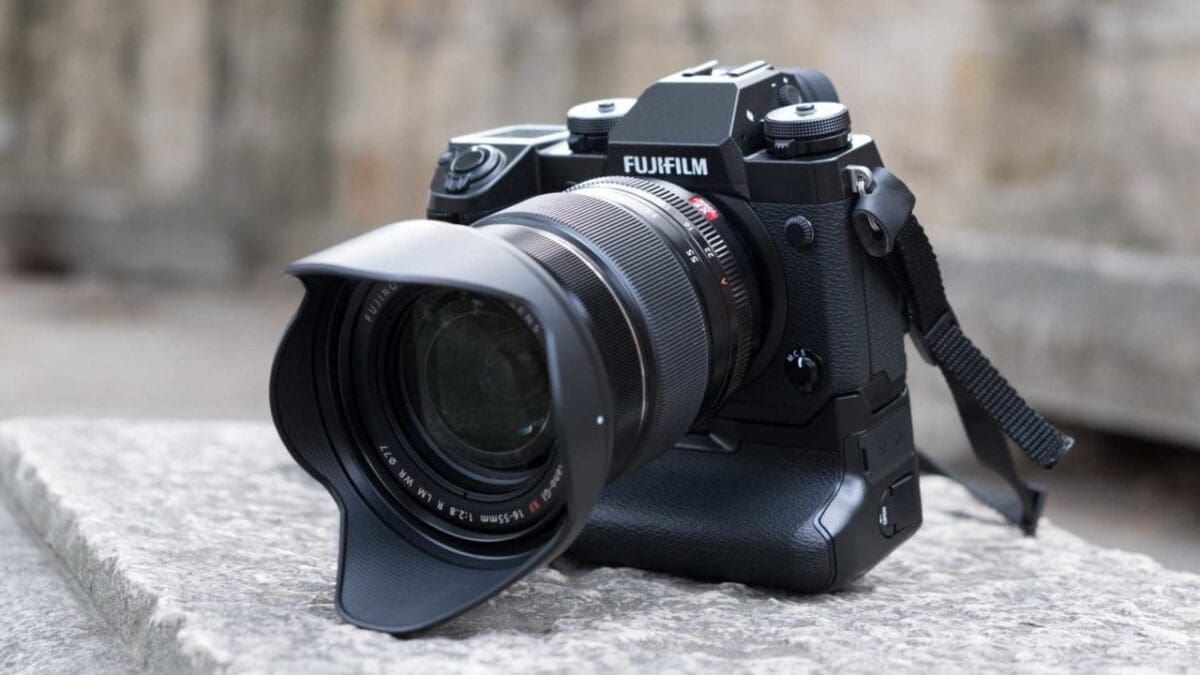
Specification
- Camera type: Mirrorless
- Sensor: 24.3Mp APS-C (23.6 x 15.6mm) X-Trans CMOS
- Processing engine: X Processor Pro
- Lens mount: Fujifilm X
- Sensitivity range: ISO 200-12,800 expandable to ISO 100-51,200
- Autofocus system: Hybrid with 91 or 325 points
- Max continuous shooting rate: Electronic shutter: 14fps for 42 jpegs, 28 lossless compressed raw or 25 uncompressed raw, Mechanical shutter: 8fps for 83 jpegs, 33 lossless compressed raw or 27 uncompressed raw or 11fps with VPB for 73 jpegs, 30 lossless compressed raw or 27 uncompressed raw
- Max video resolution: 4K (4096×2160)] 24P / 23.98P up to approx. 15min. 4K (3840×2160)] 29.97P / 25P / 24P / 23.98P up to approx. 15min. Full HD (1920×1080)] 59.94P / 50P / 29.97P / 25P / 24P / 23.98P up to approx. 20min. HD (1280×720)] 59.94P / 50P / 29.97P / 25P / 24P / 23.98P up to approx. 30min. With Vertical Power Booster Grip attached, individual movie recording time is extended up to approx. 30min. on both 4K and Full HD mode.
- Viewfinder: 0.5 inch 3.69 million-dot OLED Color Viewfinder with approx 100% coverage Eyepoint: approx. 23mm Diopter adjustment: -4~+2m-1 Magnification: 0.75× with 50mm lens
- Screen: Dual-tilting 3-inch LCD with 1,040,000 dots
- Dimensions: 139.8 x 97.3 x 85.5mm
- Weight: 623g (body only), 673g with battery and card
We haven’t included all cameras with IBIS in this guide; namely, we haven’t included all past iterations of cameras, such as Fujifilm’s X-T series. The post would be too long, plus some of these legacy cameras with IBIS are no longer available to purchase, at least not new.
However, we’ve included the Fujifilm X-H1 because one of the most widely anticipated introductions in this camera was the debut of Fujifilm’s 5-axis in-body image stabilisation system.
This was a first for the Fujifilm X-Series and it used three axial accelerometers, three axial Gyro sensors, and a dual-processor arrangement to enable the hand-held shutter speed to be extended by up to 5.5 stops.
And it performed very well!
The X-H1 is a little harder to find these days, but if you can, you can often get it for a bargain. It still offers superb image quality and wonderful stabilisation.
£1699
For
- C4K video with F-Log and 200Mbps
- 5-axis image stabilisation built-in
- Superb viewfinder
Fujifilm GFX100S
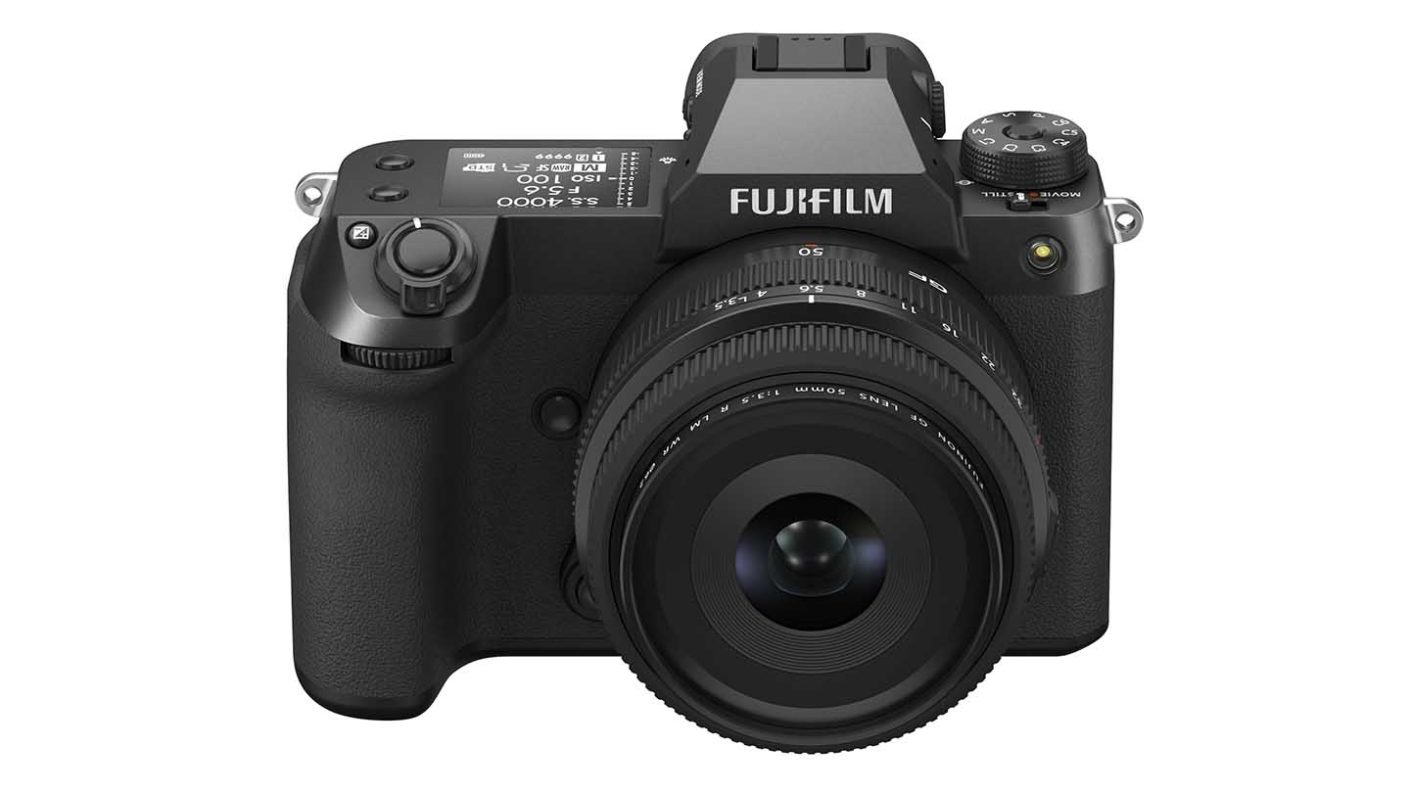
Specification
- Camera type: Medium format mirrorless
- Announced: 27th January 2021
- Sensor: 102Mp Medium format (43.8 x 32.9mm) CMOS with Bayer colour filter array
- Maximum image size: 11648 x 8736
- Processor: X Processor 4
- Lens mount: Fujifilm G
- Autofocusing: Intelligent Hybrid with up to 425 AF points
- Autofocus system: Intelligent Hybrid AF (contrast AF / phase-detection AF) with up to 425 selectable AF points
- Viewfinder: Fixed 0.5-inch 3.69million-dot EVF with 0.77x magnifications 85fps
- Screen: 3-direction tilting 3.2-inch 2.36million-dot touchscreen
- Continuous Shooting: 5fps for 42Jpegs, 16 compressed raw, 15 lossless compressed raw or 14 uncompressed raw
- Sensitivity range: Standard ISO 100-12,800, expandable to ISO 50-102,400
- Image stabilisation: In-body 5-axis giving 6EV compensation, Plus Digital IS and IS Boost for video
- Max video resolution: 4K (4096×2160) 29.97p 400Mbps up to 120min recording, Digital IS (1.1x crop), F-Log, HLG, ProRes Raw (12-bit HDMI)
- Film Simulation Modes: 19 modes: Provia/Standard, Velvia/Vivid, Astia/Soft, Classic Chrome, Pro Neg.Hi, Pro Neg.Std Classic Neg., Nostalgic Neg., Eterna/Cinema, Eterna Beach Bypass, Acros, Acros + Ye Filter, Acros + R Filter, Acros + G Filter, Black & White, Black & White + Ye Filter, Black & White + R Filter, Black & White + G Filter, Sepia
- Storage: SD/SDHC/SDXC UHS-II
- Battery: NP-W325 460 images
- Dimensions: 150 x 104 x 44mm
- Weight: 900g including battery and card
The Fujifilm GFX 100S also features in-body image stabilisation (IBIS) across 5 axes, providing up to 6EV of shutter speed compensation. The Pixel Shift Multi Shot mode, which allows for the creation of a 400Mp image by combining 16 images with slight sensor movements between each capture, is available on both the GFX 100 and the new GFX 100S.
To composite the images, Fujifilm’s Pixel Shift Combiner software is required, and the process takes place on a computer rather than in-camera. In handheld shooting tests, the GFX100 produced a hit rate of about 40% with the mechanical shutter at 1/8sec using the GF 63mm f/2.8 R WR lens, increasing to almost 100% at 1/15sec.
Although medium format cameras are typically used on tripods, the smaller IBIS unit in the GFX100S can provide up to 6EV of shutter speed compensation. While the Fujinon GF 32-64mm f/4 R LM WR lens consistently produced sharp results at shutter speeds of 1/6 and 1/7sec, the Fujinon GF 120mm F4 R LM OIS WR Macro lens (equivalent to 95mm) proved too challenging at 1/9sec.
£5499
$5999 / €5999For
- Superb sensor
- Phase detection autofocus system
- Small for medium format
Fujifilm GFX 100
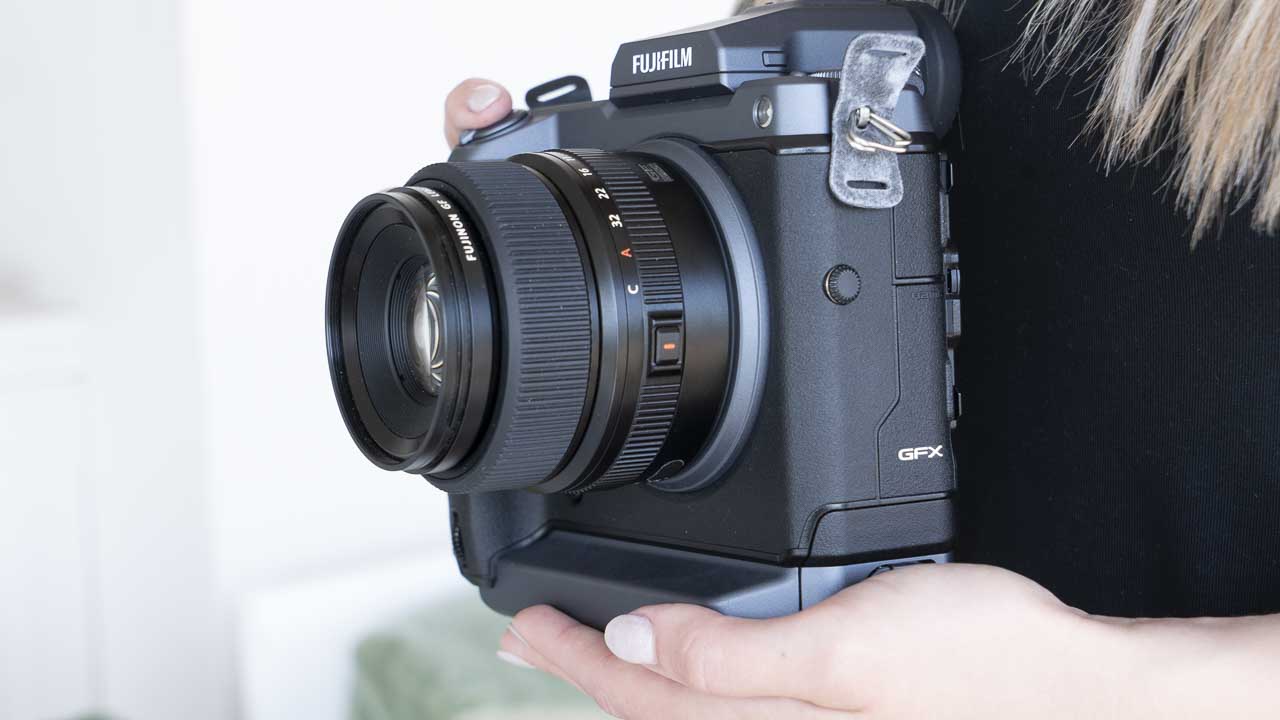
Specification
- Camera type: Medium format mirrorless
- Announced: June 2019
- Phase detection AF points: 3.67m
- Sensor: 102Mp Medium format (43.8 x 32.9mm) CMOS with Bayer colour filter array
- Lens mount: Fujifilm G
- Autofocus system: Intelligent Hybrid AF (contrast AF / phase-detection AF) with up to 425 selectable AF points
- Viewfinder: 0.5-inch 5.76million-dot OLED
- Screen: 3-direction tilting 3.2-inch 2.36million-dot touchscreen
- Continuous Shooting: 10fps for up to 58 Jpeg and 25 raw files with UHS-II card with the viewfinder. In Live view mode, up to 11fps with One-Shot AF or 7fps with Servo AF
- Sensitivity range: Stills: ISO 100-12,800 expandable to ISO 50-102,400, Video: ISO 200-12,800 expandable to 50-25,600
- Max video resolution: 4K (4096×2160) 29.97p / 25p / 24p / 23.98p 400Mbps/200Mbps/100Mbps up to Approx. 60min.
- Storage: SD/SDHC/SDXC UHS-II
- Dimensions: 156.2mm x 163.6mm x102.9mm (inc EVF)
- Weight: 1,400g including EVF, 2x battery & memory card
The Fujifilm GFX 100, a mirrorless medium format camera with the Fujifilm G mount, sets a new standard by being the first digital medium format camera to incorporate in-body image stabilization (IBIS). This innovative feature, however, necessitates a larger size and a vertical grip, which makes the GFX 100 the first medium format mirrorless digital camera to have an integrated double grip design.
The GFX 100’s 5-axis image stabilization system is powered by a three-axis accelerometer, three-axis gyro sensor, and a dedicated dual processor. It provides up to 5.5EV of shutter speed compensation when the camera is handheld, giving the user greater flexibility and stability in capturing images.
In her review, Angela achieved an impressive 40% hit rate with the GFX 100’s mechanical shutter and the GF 63mm f/2.8 R WR lens at a shutter speed of 1/8sec, which rose to almost 100% at 1/15sec.
£9999
$9999.95For
- Stunning images
- Excellent autofocus system
- Superb stabilisation system
Which Pentax cameras have IBIS?
Pentax’s K-1 Mark II may be big and bulky, but the full-frame DSLR offers superb stabilisation. Rumours of a new flagship APS-C DSLR could add another camera to this list.
Pentax K-1 II

Specification
- Sensor: 36.4 million Full-frame (35.9 x 24mm)
- Processor: PRIME IV
- Autofocus: 33-points with 25 cross-type
- Sensitivity: ISO 100-240,800
The Pentax K-1 II and K-1 share many similarities, but the K-1 II has some notable improvements, including an updated version of the Pixel Shift Resolution System called Pixel Shift Resolution System II. One of the key features of the upgraded system is the Dynamic Pixel Shift Resolution mode, which is designed to enhance color accuracy and definition.
This mode works by shifting the sensor by a single pixel width between four shots, which are then combined to create a single image. There are now two modes available: the first is recommended for use with a tripod and stationary subjects, while the second is designed to handle moving subjects and handheld shooting, although Pentax still suggests using a tripod for the best results.
According to Pentax, the Pixel Shift Resolution II system captures RGB color data for each pixel, resulting in higher resolution images with more accurate colors and finer details than traditional full-frame sensors can produce.
Additionally, the Dynamic Pixel Shift Resolution mode can be used in conjunction with the camera’s shake-reduction mechanism to compensate for subject movement during continuous shooting.
£1800
$1999.95For
- Captures superb detail
- Pixel Shift Resolution II
- Excellent colour
- Weather-proof
Which Olympus cameras have IBIS?
An early pioneer in in-body image stabilisation, it was Olympus cameras like the E-M1 Mark II that showed us the extremes to which you can push your camera and truly shoot anywhere.
OM System OM-1
Specification
- Camera type: Mirrorless
- Announced: 15th February 2022
- Sensor: 20.4Mp Four Thirds Type (17.3 x 13.0mm) CMOS
- Lens mount: Micro Four Thirds
- Sensitivity range: ISO 80-102,400
- In body stabilisation: 5-axis giving up to 7EV shutter speed compensation, 8EV when combined with lens IS
- Processing engine: TruePic X
- Autofocus system: Hybrid with 1053 cross-type phase detection points and 1053 contrast detection points
- Max continuous shooting rate: Mechanical shutter: 10fps
- Pro Capture High Mode: 120fps (with Pro lenses) or 50fps AF tracking
- Max video resolution: 4K (4096 x 2160) at 30, 25, 24p(approx. 102Mbps), 60, 50p (approx. 202Mbps), 4K (3840 x 2160) 30p, 25p, 24p (approx. 77Mbps), 60, 50p (approx. 152Mbps) all in LongGOP, Full HD (1920 x 1080) 30, 25, 24p / ALL-I(approx. 82Mbps), LongGOP(approx. 22Mbps) 60, 50p ALL-I(approx. 162Mbps, LongGOP(approx. 42Mbps)
- Video format: MOV (MPEG-4AVC/H.264)
- Viewfinder: 5.76M-dot OLED
- Screen: 3-inch 1,.62M-dot vari-angle touchscreen
- Storage: 2x SD/SDHC/SDXC (UHS-II)
- Dimensions (WxHxD): 134.8 x 91.6 x 72.7mm
- Weight: 511g (body only), 599g including battery, 1 memory card but excluding the eye cup
The OM System OM-1 boasts several cutting-edge features and technologies developed by Olympus, one of which is Live Composite mode. This mode is particularly useful for capturing images of traffic trails, light painting, and fireworks. By capturing a sequence of images, with the first image setting the ambient exposure and only the new, brighter areas being recorded from then on, Live Composite mode produces stunning results.
Furthermore, the OM-1’s 5-axis IBIS is one of the best image stabilization systems available and provides up to 7EV of shutter speed compensation. When combined with lens IS, this compensation increases to 8EV, enabling handheld long exposure photography. The Olympus M.Zuiko ED 12-45mm Pro lens mounted on the OM-1 produced sharp images at 1 second or longer exposures, even when hand-held. Additionally, the OM-1’s image stabilization system works flawlessly in video mode.
£2000
$2199.99For
- High weatherproofing
- High-speed shooting capability
- Excellent subject detection modes
OM System OM-5
Specification
- Camera type: Mirrorless camera
- Announced: 26th October 2022
- Sensor: 20.4Mp Live MOS Micro Four Thirds sensor
- Lens mount: Micro Four Thirds
- Processing engine: TruePic IX
- Sensitivity range: ISO 64-25,600
- Autofocus system: Hybrid with 121 (all cross-type) phase-detection AF points
- Continuous shooting rate: Mechanical shutter: 10fps with focus and exposure fixed at the start of the burst, for up to 149 raw files or until the card is full with Jpeg (LF) files, 6fps with C-AF until the card is full; Electronic Shutter: 30fps for 81 raw or 20 Jpeg (LF) or 10fps for 138 raw or until the card is full with Jpegs (LF)
- Pro Capture mode: H: 30fps, L:10fps, pre-shutter frames 0 - 14 frames (recorded by half release prior to full release), Frame count limiter 1 - 99 frames / Off (unlimited frames)
- Key video resolutions: C4K (4096 x 2160) 24p at up to 237Mbps, 4K (3840 x 2160) 30p, 25p, 24p at 102Mbps, Full HD (1920 x 1080) at 30p, 25p, 24p / ALL-I (A-I), IPB (SF, F, N) (MOV), Full HD 1920 x 1080 at 30p, 25p, 24p / ALL-I (A-I), IPB (SF, F, N) (MOV), Full HD (1920 x 1080) 60p, 50p / IPB (SF, F, N) (MOV)
- High-Speed Recording mode: Full HD (1920x108) MOV at 120fps
- High Res Shot mode: Tripod mode: Jpeg: 10368x7776 (80Mp), 8160 x 6120 (50MP), 5760 x 4320 (25MP), Raw: 10368 x 7776 (80MP); Handheld mode: Jpeg: 8160 x 6120 (50MP), 5760 x 4320 (25MP), Raw: 8160 x 6120 (50MP)
- Live Bulb Shooting Options: Live Composite, Live Time, Live Bulb, Focus Bracketing, Focus Stacking
- Viewfinder: 2,360,000-dot OLED, magnification 1.37x, 27mm eye point
- Screen: Vari‑angle 3.0-inch 1,037,000-dot touchscreen
- Dimensions (W x H x D): 125.3 x 85.2 x 49.7mm
- Weight: 414g including battery and memory card, 366g body only
The OM System OM-5 takes the popular OM-D E-M5 Mark III and amplifies its processing capabilities, leading to an improved image stabilisation and autofocus performance. Additionally, the Focus Stacking system is now able to composite the final image.
The OM-5 introduces the Hand-held High Res Shot mode, which is a significant improvement over the E-M5 III. By utilizing the sensor-shifting capability of the stabilisation system, the camera captures a series of 8 images in quick succession, which are then composited into a single larger image. In Standard or Tripod High Res Shot mode, the OM-5 can produce 80MP, 50MP, or 25MP images when shooting Jpegs, and the output is equivalent to an 80MP image when shooting raw files. However, in Hand-held mode, the maximum output size drops to 50MP for either file type and 25MP when shooting Jpegs.
OM System claims that the image stabilisation system in the OM-5 is 15% better than the system in the E-M5 Mark III, enabling up to 6.5EV of shutter speed compensation. Moreover, when used with a compatible stabilised lens, it can provide up to 7.5EV shutter speed compensation, making it convenient for travelers who prefer not to carry a tripod.
£1199
€1299 / $1199.99For
- Excellent weather-proofing
- Very compact and lightweight
- Excellent stabilisation and useful features for creative photography
Olympus OM-D E-M1 Mark III
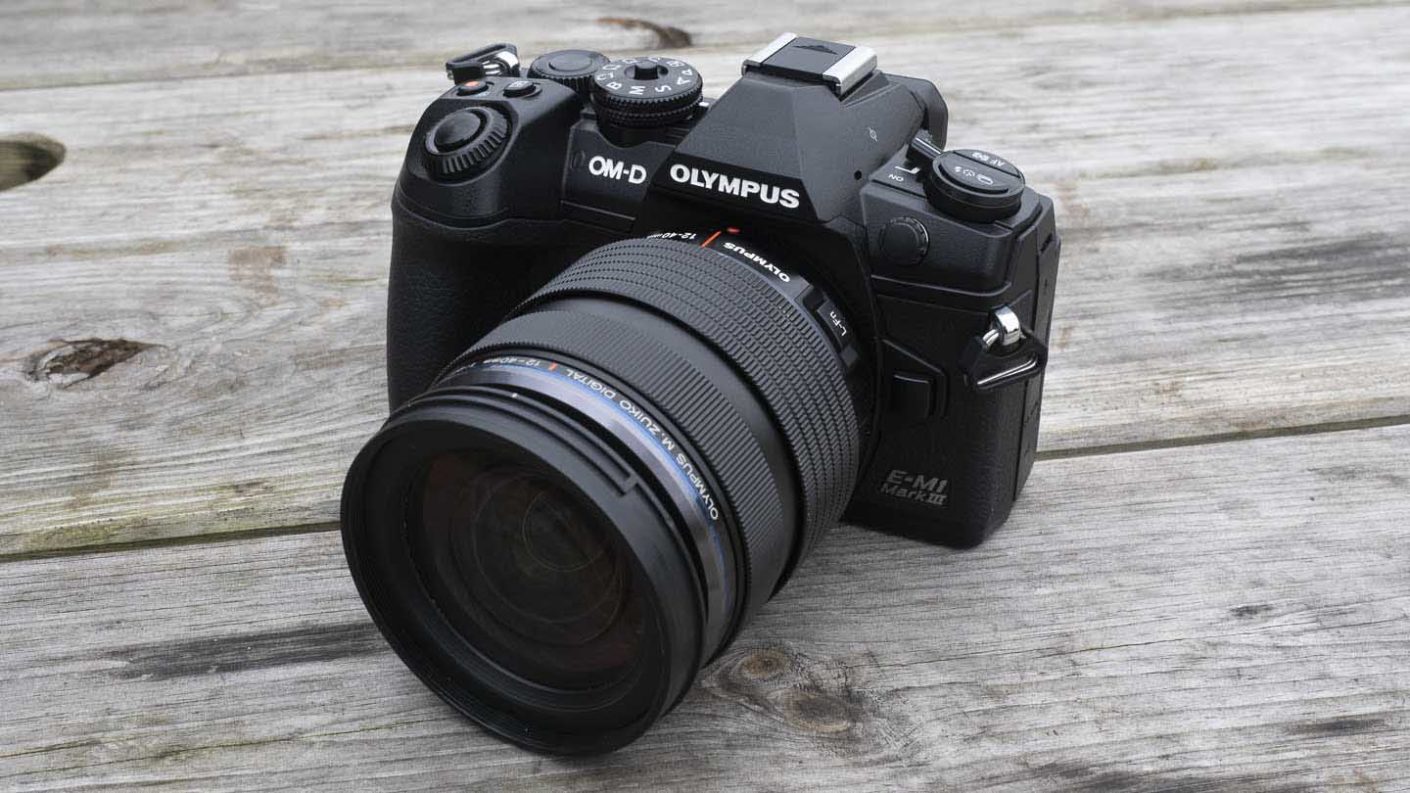
Specification
- Camera type: Mirrorless
- Lens mount: Micro Four Thirds
- Sensor: Four Thirds type 20.4 MP Live MOS sensor
- Announced: 12th February 2020
- Processing engine: TruePic IX
- Autofocus system: Hybrid with 121-point all cross-type focus points
- Max continuous shooting rate: 18fps AF/AE mechanical shutter (C-AF), 60fps in electronic shutter (S-AF)
- Max video resolution: C4K (4096 x 2160) at 30/25p
- Viewfinder: 2,360,000-dot electronic viewfinder
- Sensitivity range: ISO 64-25,600
- Screen: Vari‑angle 3-inch 1,037,000-dot touchscreen
- Storage: 2x SD/SDHC/SDXC (1 UHS-I and 1 UHS-II)
- Dimensions (LxHxW): 134.1 x 90.9 x 68.9mm
- Weight: 504g body only, 580g with battery and SD card
The E-M1 Mark III from Olympus boasts exceptional image stabilisation (IS) and has been enhanced to provide up to 7.5Ev of shutter speed compensation across 5 axes when used with a stabilised lens. When used with a non-stabilised lens, it still provides up to 7EV compensation, thanks to the use of the same gyro found in the E-M1X.
The IBIS system in the E-M1 III facilitates the High Res Shot mode, which produces high-resolution images thanks to sensor-shifting technology. The 80Mp Tripod High Res Shot mode is not the only option; the camera also features a 50Mp HandHeld version. Simply select either Handheld or Tripod mode from the menu, then activate High Res Shot via the drive settings. The camera then takes a series of images with the sensor slightly shifted each time, which are composited in-camera to produce a single, highly detailed picture in raw and/or JPEG format.
£1600
$1499For
- Compact size with vari-angle screen
- Great feature set
- Excellent lens range
Olympus OM-D E-M1X
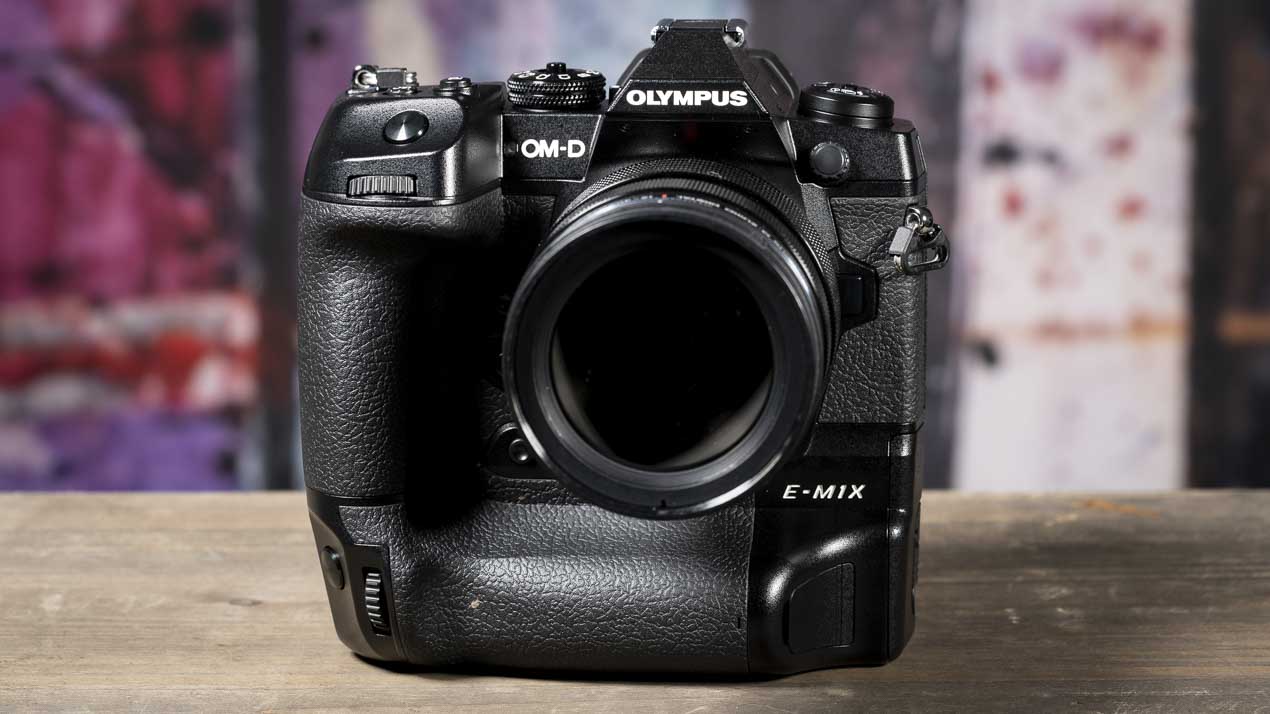
Specification
- Camera type: Mirrorless
- Sensor: 20.4Mp Four Thirds Type (17.3 x 13.0mm) CMOS
- Lens mount: Micro Four Thirds
- Sensitivity range: ISO 64-25,600
- Processing engine: 2x TruePic VIII
- Autofocus system: Hybrid with 121 cross-type points (800 in magnified view)
- Max continuous shooting rate: 18fps with AF tracking, 60fps with AF locked on first frame with electronic shutter
- Pro Capture High Mode: 60fps
- Pro Capture Low Mode: 18fps
- Burst Mode in S-AF: 15fps for 143 raw files
- Burst Mode in C-AF: 10fps for 283 raw files
- Max video resolution: 4K (4096 x 2160) at 24p
- Viewfinder: Electronic with 2,360,000 dots
- Screen: Touch-sensitive vari-angle 3-inch LCD with 1,037,000 dots
- Storage: 2x SD/SDHC/SDXC (UHS-II)
- Dimensions (WxHxD): 144.4 x 146.8 x 75.4mm
- Weight: 849g (body only), 997g (including 2 batteries and memory cards)
It’s no secret that Olympus’s 5-axis Image Stabilizer is among the best available. In fact, with older models such as the OM-D E-M1 II and a wide-angle lens, we were able to achieve hand-held exposures of 2 to 3 seconds thanks to this technology.
But with the OM-D E-M1X, Olympus went one step further, introducing a new gyro sensor that significantly improved the IS performance. At a focal length of 100mm (35mm equivalent: 200mm) with the M.Zuiko Digital ED 12-100mm F4.0 IS PRO lens, the camera boasts up to 7.5EV of shutter speed compensation.
And it’s not just for stills. The IS works just as effectively in video mode, and users have the option to adjust the level of stabilisation according to their needs.
£2199
$1999For
- One of the fastest cameras you can buy
- Pro Capture Mode offers lots of flexibility
- High Res Shot mode is very impressive
Olympus OM-D E-M10 Mark IV
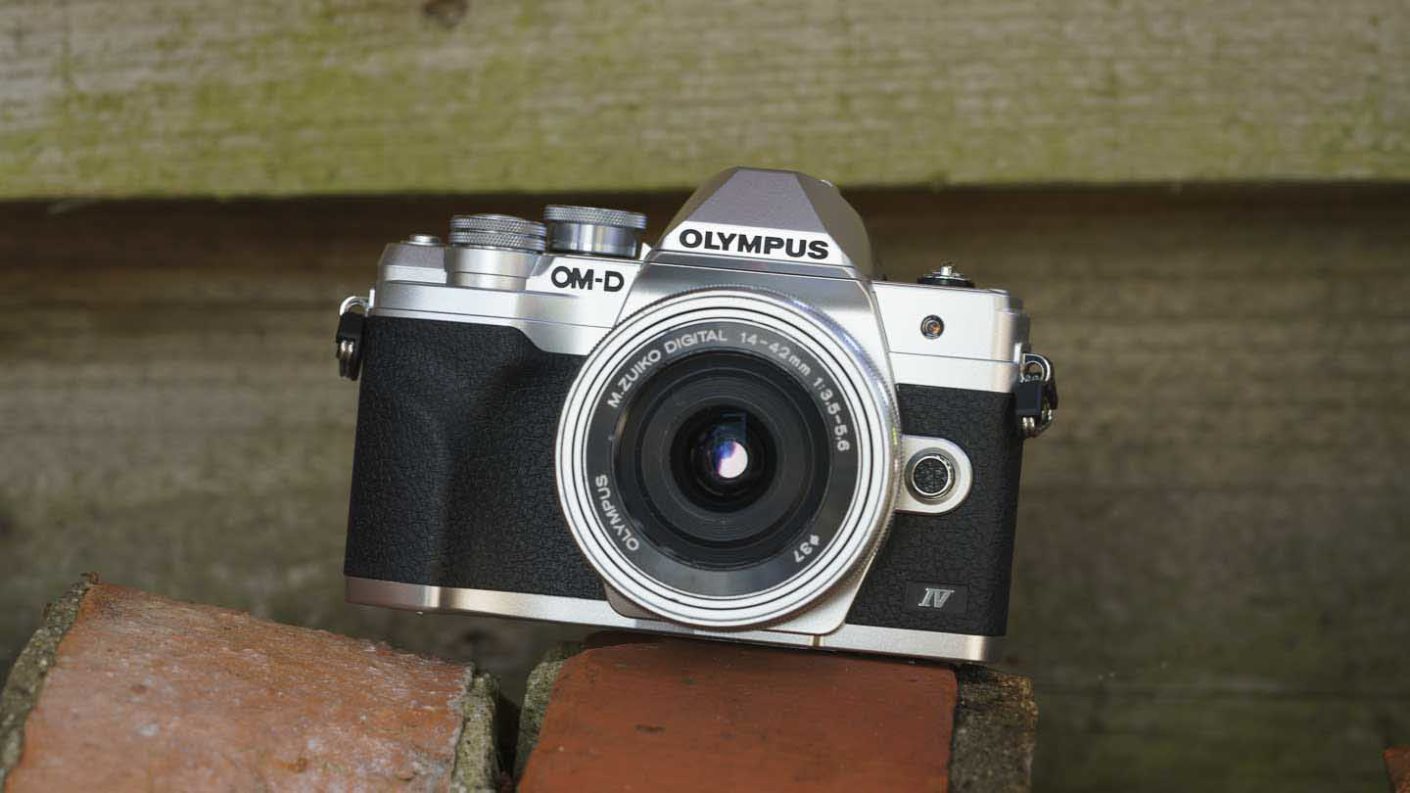
Specification
- Camera type: Micro Four Thirds mirrorless
- Announced: 4th August 2020
- Sensor: Four Thirds Type 20.3Mp Live MOS
- Processing engines: TruePic VIII
- Sensitivity range: ISO 80-25,600
- Viewfinder: 2,360,000-dot electronic with 1.23x magnification and 19.2mm eye point
- Stabilisation: 5-axis with up to 4.5EV shutter speed compensation
- Screen: 3-inch 1,037,000-dot tilting touchscreen
- Focus modes: Manual focus, Single AF, Continuous AF, Single AF + MF, AF Tracking, Super Spot AF, Face Detection AF
- Exposure modes: Programme, Aperture priority, Shutter priority, Manual, Bulb, Time, i-Auto, Scene Modes, Art Filter, Movie, Live Time, Live Composite, Advanced Photo Modes (Live Composite, Live Bulb, Multiple Exposure, HDR Backlight, Silent, Panorama, Keystone Compensation, AE bracketing, AF bracketing)
- Autofocus system: Contrast detection with up to 121 points
- Autofocus point selection modes: All target, Group target (9-areas), Single target
- Exposure metering: 324 zones Multi-pattern Sensing System with ESP, Spot, Centre weighted, Highlight and Shadow mode
- Art filers: Pop Art, Soft Focus, Pale & Light Colour, Light Tone, Grainy Film, Pin Hole, Diorama, Cross Process, Gentle Sepia, Dramatic Tone, Key Line, Water colour, Vintage, Partial Colour, Bleach Bypass, Instant Film
- Shutter speed: 1/16,000-60sec, Bulb to 30mins
- Maximum continuous shooting rate: High: 15 fps Low: 6.3 fps, Max. number of frames: High 42 raw files or 49 (LF) JPGs, Low: 945 raw files or until the card is full with (LF) JPGs
- Video resolution: 4K (3840 x 2160) / 30p, 25p, 24p / IPB (approx. 102 Mbps) Full HD (1920 x 1080) / 30p, 25p, 24p (MOV) Full HD (1920 x 1080) / 60p, 50p / IPB (F,N) / (MOV) HD (1280 x 720) / 60p, 50p, 30p, 25p, 24p (MOV)
- Time lapse: 4k, 1080p, 720p
- Flash: Built-in GN 7.2 (ISO200), hotshoe for external flash
- Connectivity: Wi-Fi, Bluetooth
- Multiple exposure: 2 frames with or without autogain
- Storage: SDHC/SDXC UHS-II
- Dimensions (WxHxD): 121.7x84.4x49mm
- Weight: 383g including battery and SD card
Still one of the best cameras for beginners, the E-M10 IV from what was then-Olympus features in-body image stabilisation (IBIS) that allows you to shoot at shutter speeds up to 4.5EV slower than usual, resulting in sharp images. Video mode also benefits from this system, although digital stabilisation can lead to a slight crop in the frame.
Olympus has a long-standing reputation for producing excellent image stabilisation, and our reviews editor, Angela, was able to capture around 50% of images perfectly sharp with the Olympus M.Zuiko Digital ED 60mm f/2.8 Macro lens mounted, which has an effective focal length of 120mm, even at a low shutter speed of 1/13sec.
When using the 14-42mm kit lens at the 42mm end (84mm effective), she was able to get around 80% hit rate at a shutter speed of 1/10sec and 50% at 1/5sec, and even 2 or 3 completely sharp images out of 10 at 1sec. You don’t need a tripod for these results; hand holding the camera at waist-level is sufficient, and using the viewfinder can provide more stability by bracing it against your face.
If you want a camera that delivers excellent results, and can shoot without a tripod most of the time, the Olympus OM-D E-M10 Mark IV is an ideal choice to carry with you everywhere.
£699
$649For
- Very compact, yet versatile camera
- Tilting screen can face forwards for selfies and vlogging
- Live Composite and Live Bulb mode make long exposure photography easy

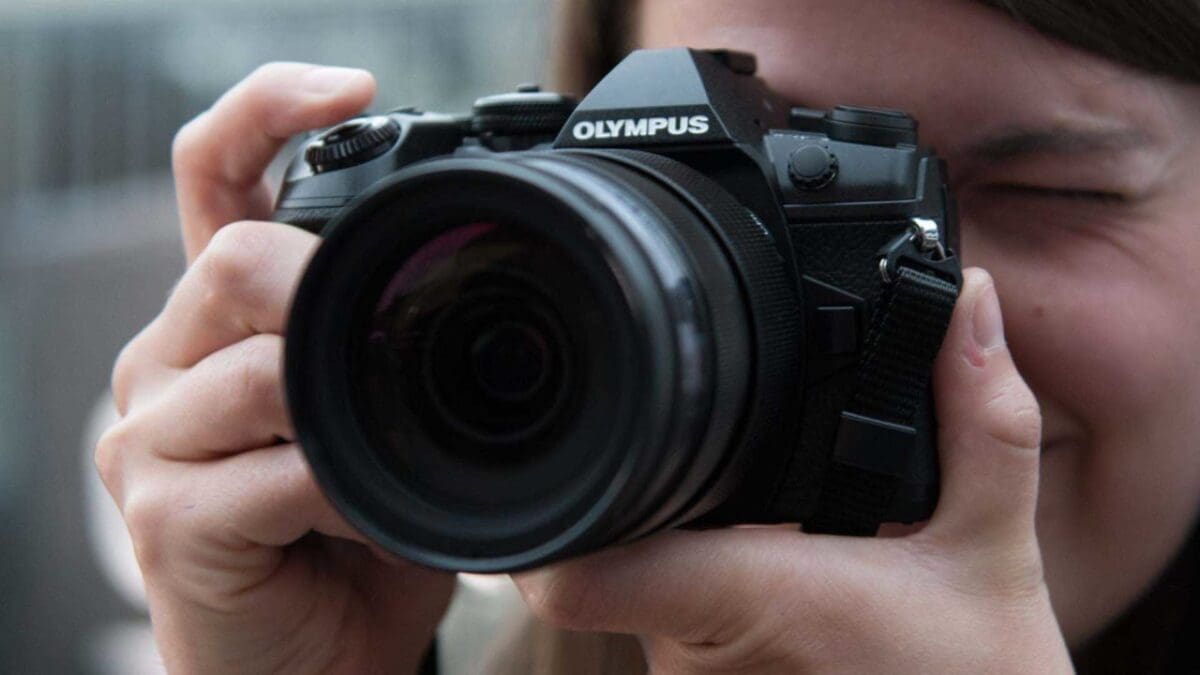

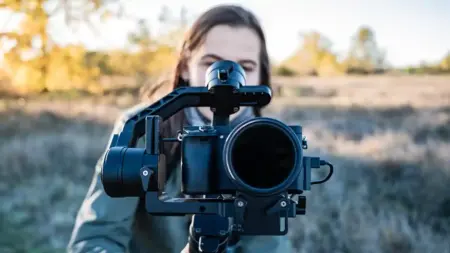
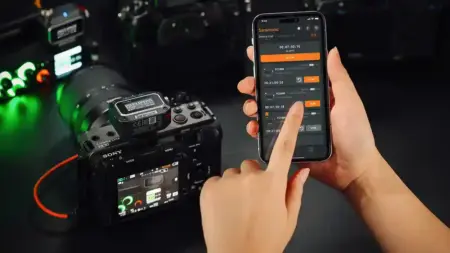
Leave a Reply